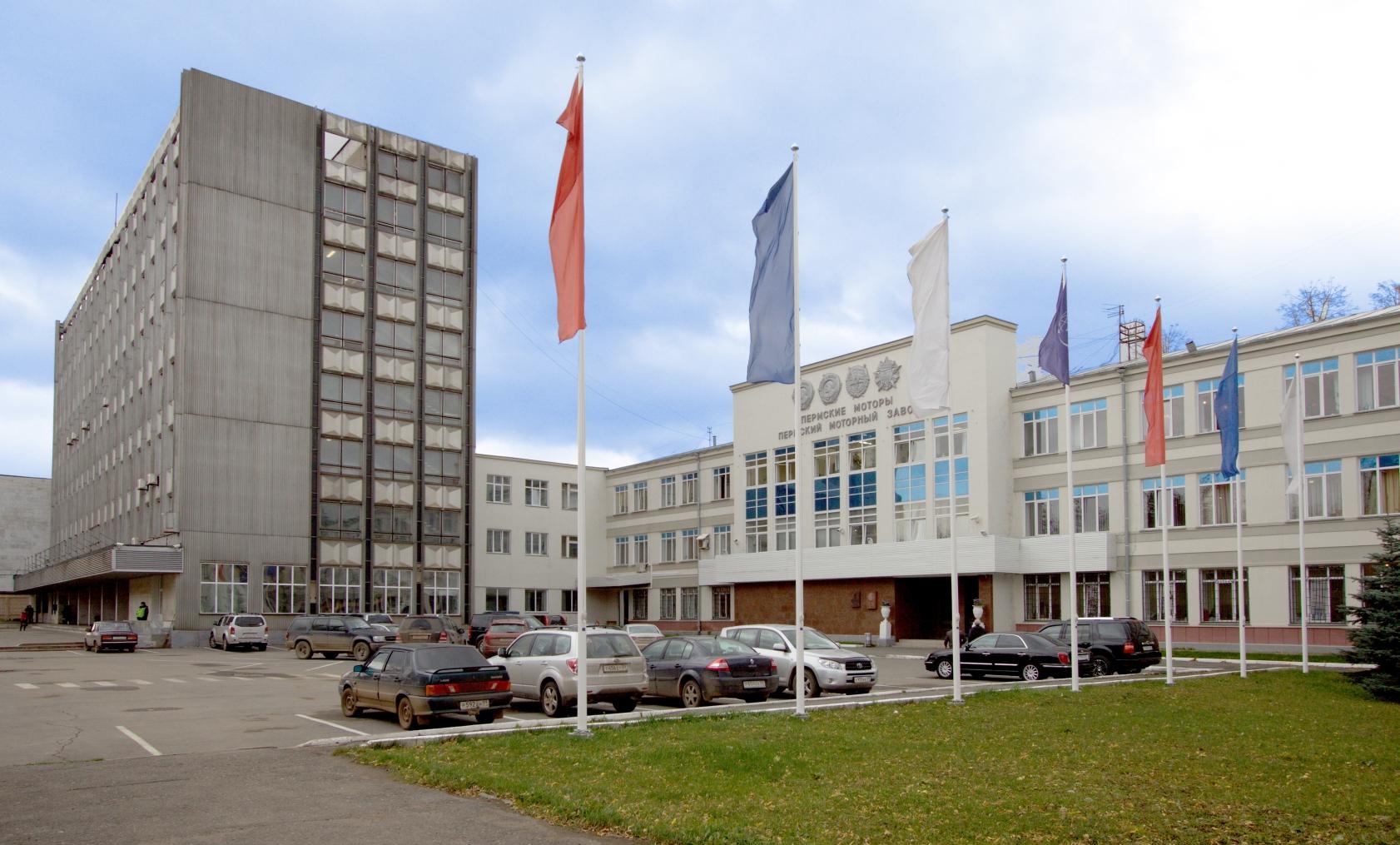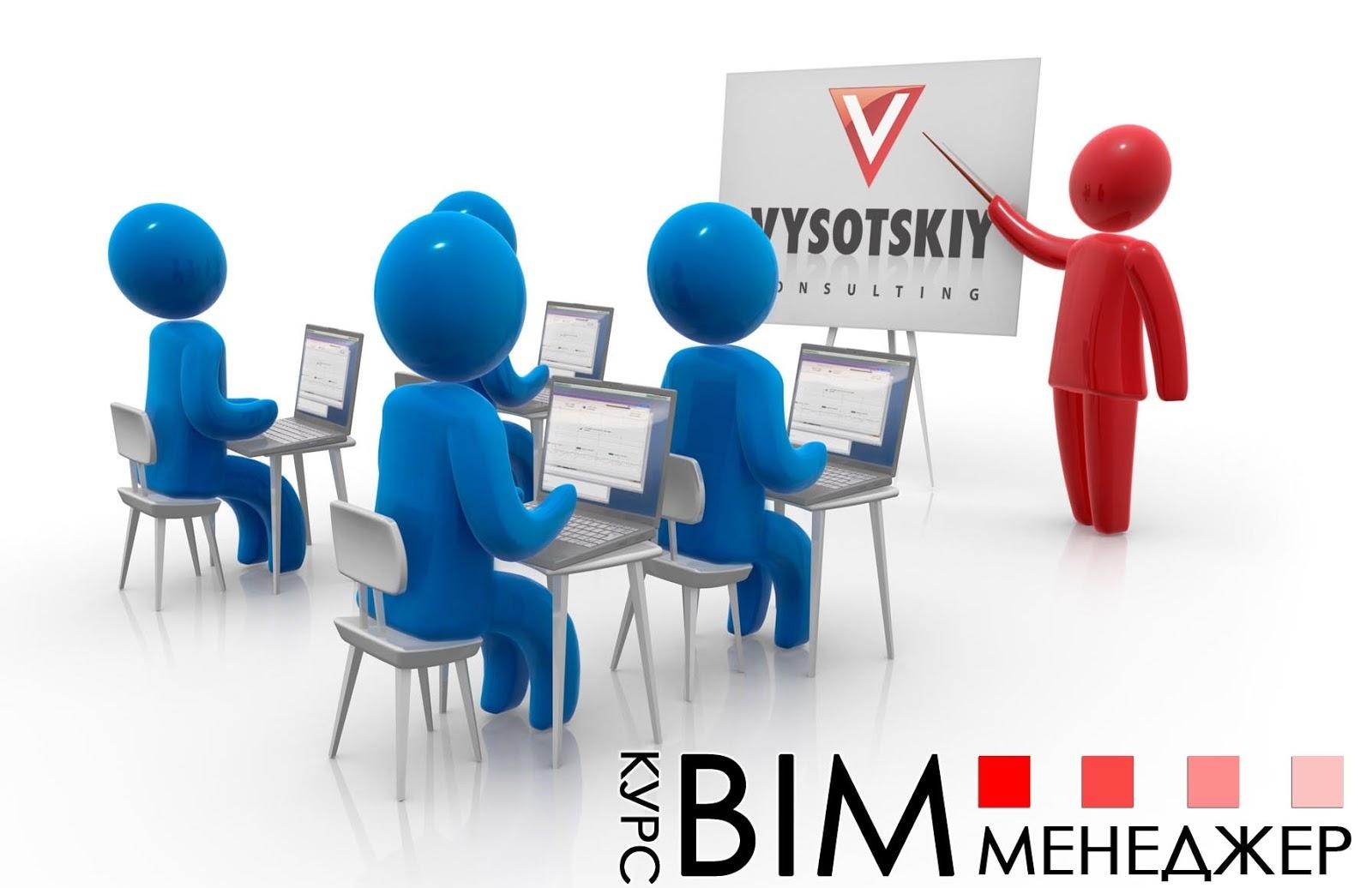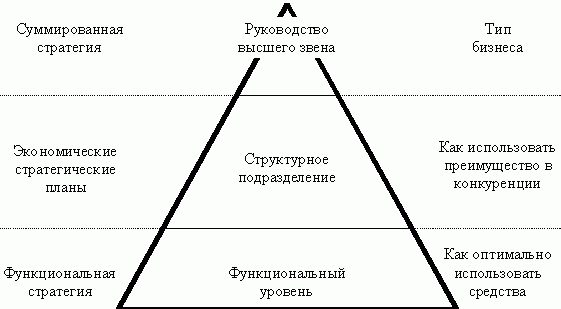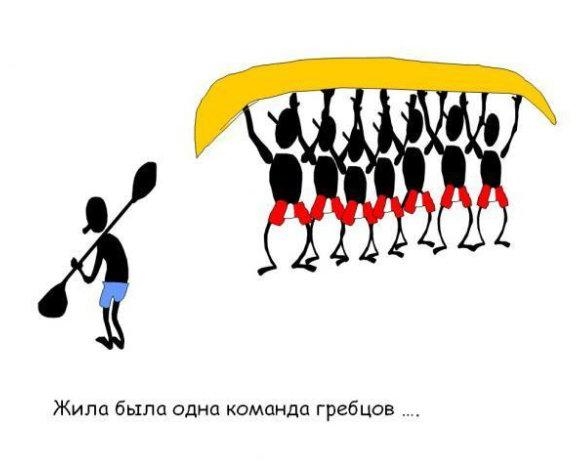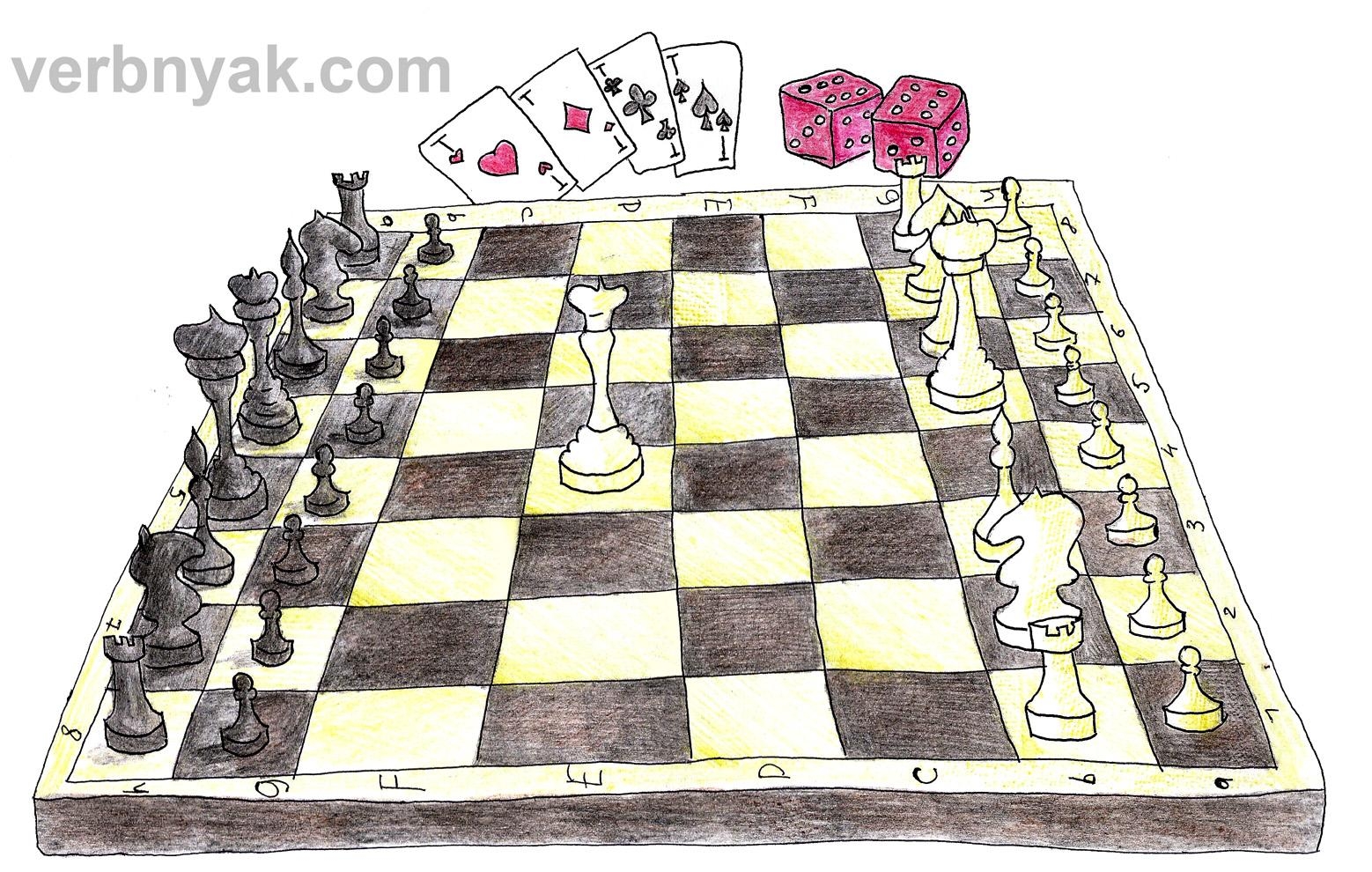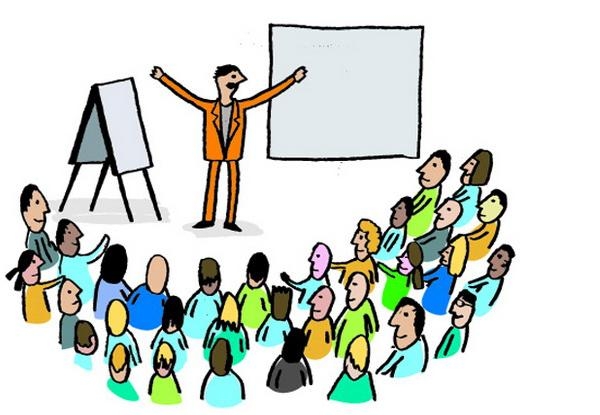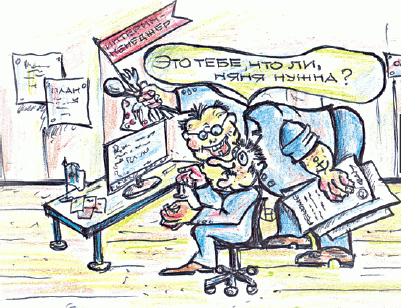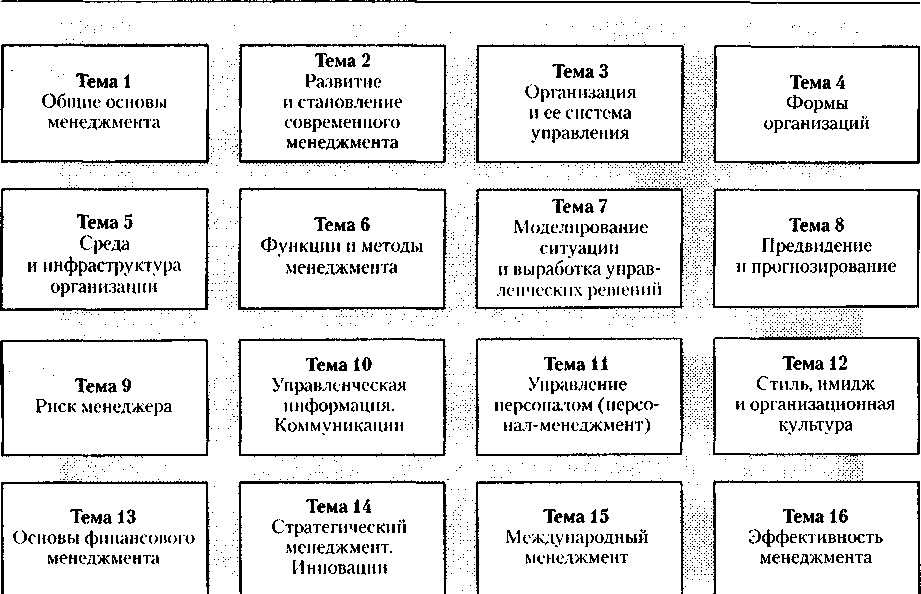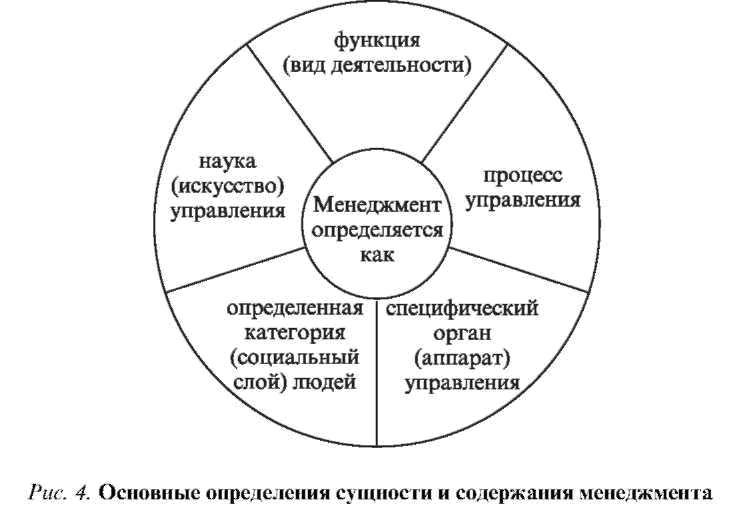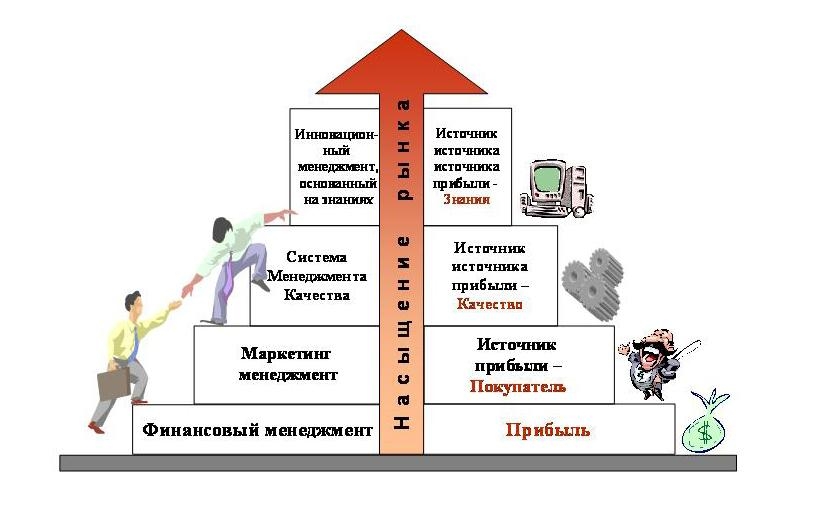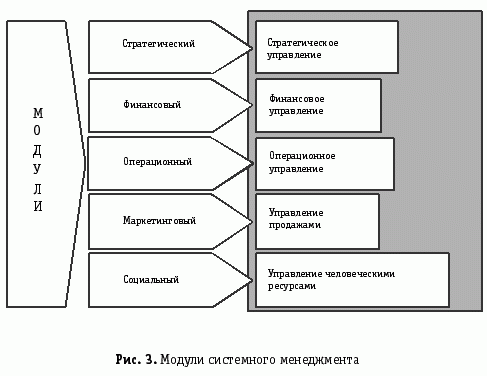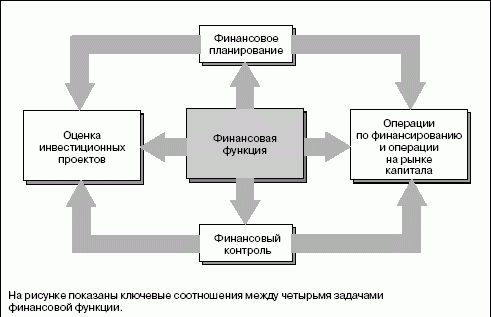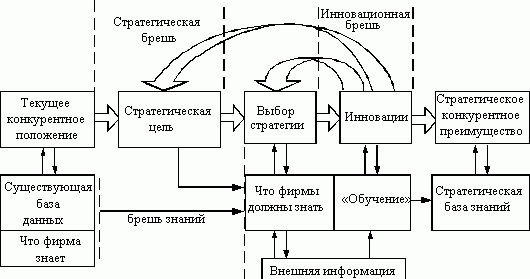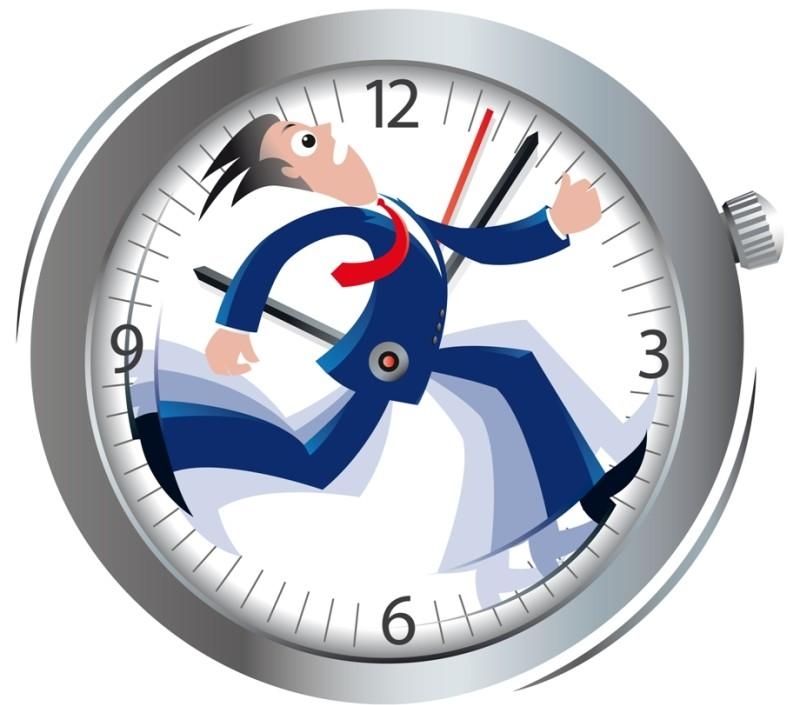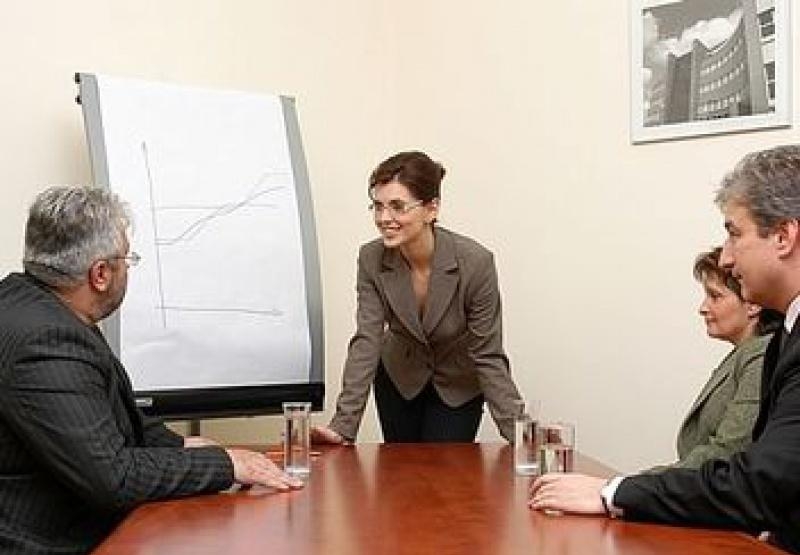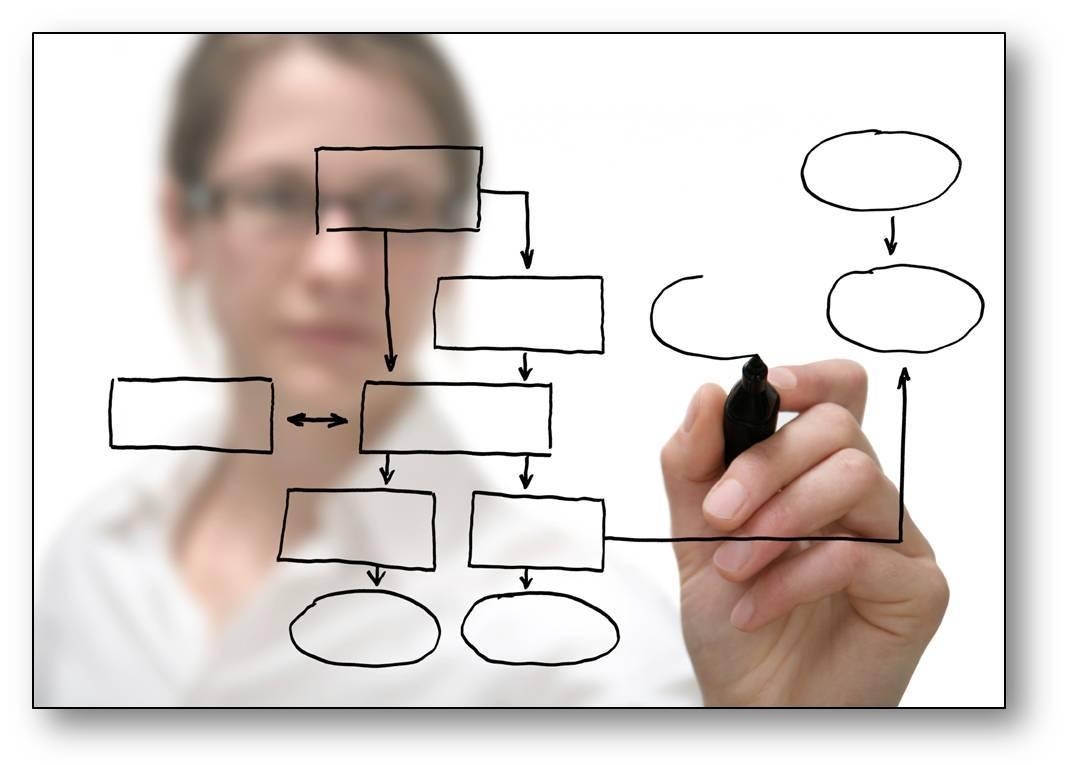Руководство
и лидерство являются частью управления,
в которой различные управленческие
вопросы решаются воздействием на
подчиненных.
Управление
—
процесс руководства действиями,
направленными на достижение
поставленных целей.
Руководство
—
интеллектуальная и физическая деятельность
с целью выполнения подчиненными
предписанных им действий и решение
определенных задач.
Лидерство
—
процесс, с помощью которого один человек
оказывает влияние на другого человека
или группу.
Понятия
«руководство» и «лидерство» различны.
Р. С. Филонович дает следующий перечень
отличительных особенностей руководителя
от лидера:
|
Руководитель |
Лидер |
|
Администратор |
Инноватор |
|
Поручает |
Вдохновляет |
|
Работает |
Работает |
|
Основа |
Основа |
|
Полагается |
Полагается |
|
Использует |
Использует |
|
Контролирует |
Доверяет |
|
Поддерживает |
Дает |
|
Профессионал |
Энтузиаст |
|
Принимает |
Превращает |
|
Делает |
Делает |
|
Уважаем |
Обожаем |
В
зависимости от официального положения
в организации, наличия прав и обязанностей
понятия «руководитель» и «лидер»
различаются по следующим параметрам:
|
Руководитель |
Лидер |
|
Назначается |
Выдвигается |
|
Даны |
Не |
|
Выполняет |
Деятельность |
|
Несет |
Не |
|
Руководство |
Лидерство |
Параметры
руководителя и лидера по отношению друг
к другу определяются А. А. Романовым и
А. А. Ходыревым:
|
Параметр |
Реализация |
|
|
руководителя |
лидера |
|
|
«Рождение» |
Назначение |
Выдвижение |
|
Предназначение |
Выполнение |
Выполнение |
|
Система |
Формализованная, |
Неформальная, |
|
Разработка |
Согласованные |
Несогласованные, |
Руководитель
должен обладать лидерским влиянием для
эффективного руководства.
Лидерство
— это
порожденный
системой неформальных отношений
процесс
воздействия на людей. Руководство
реализуется через четко определенные
формальные (официальные) Отношения.
Лидерство
формируется стихийно, на уровне
интуитивных психологических отношений.
Руководство
и лидерство имеют и общие черты:
-
полная
подчиненность принятым в организации
целям; -
постоянное
общение с людьми, объединенными в
группы; -
воздействие
на членов группы для достижения целей; -
мотивирование
персонала; -
реализация
социального влияния на рабочие группы.
Выделяют
три типа лидеров: вожак, лидер в узком
смысле слова, ситуативный лидер.
Вожак
— самый
авторитетный член группы, обладает
даром внушения и убеждения. Может влиять
на членов группы словом, жестом, взглядом.
Американский
исследователь Р. Стогдилл предложил
следующий перечень качеств
руководителя-вожака:
-
физические
качества — активный,
энергичный, здоровый, сильный; -
личностные
качества —
приспособляемость, уверенность в себе,
авторитетность, стремление к успеху; -
интеллектуальные
качества —
ум, умение принять нужное решение,
интуиция, творческое начало;
способности
— контактность,
легкость в общении, тактичность,
дипломатичность.
Лидер
— пользуется
меньшим авторитетом, чем вожак; побуждает
к действию не только внушением и
убеждением, но и личным примером.
Ситуативный
лидер —
носитель личностных качеств, имеющих
значение только в какой-то конкретной
ситуации (торжественное собрание,
юбилей, поход и т.п.).
Лидеры,
активно влияя на социально-психологический
климат в коллективе, составляют
резерв на выдвижение, но вместе с тем
могут стать источником конфликтов.
Неформальных лидеров можно «классифицировать»
на: деловых, эмоциональных, авторитарных,
демократических, позитивных, негативных.
Руководитель,
являясь формальным лидером, должен
иметь полное представление о
неформальной структуре коллектива.
С
точки зрения масштабов деятельности
выделяют три типа лидерства:
-
бытовой
— в
школьных, дружеских компаниях,
студенческих группах, в семье; -
социальный
—
на предприятии, в общественном движении; -
политический
— государственные,
политические деятели.
Руководитель
направляет и координирует деятельность
исполнителей, которые должны
подчиняться ему в обязательном порядке
и выполнять все его требования в рамках,
определенных полномочиями.
В
соответствии с уровнями
управления можно
выделить: руководителей высшего
звена,
руководителей среднего
звена,
руководителей низового
звена
(табл. 5.1).
Типы
руководителей могут определяться в
зависимости от направленности их
деятельности и способов достижения
поставленных целей.
В
зависимости от
направленности деятельности руководителей
на развитие производства или заботу о
людях и формирование сплоченного
коллектива можно
выделить 81 вариант типов.
Классификация
типов руководителей под названием
«управленческая решетка» была
предложена английскими учеными Р.
Блейком и Дж. Моутон. «Управленческая
решетка» — это двухмерная схема, где
по оси X
(горизонтальная
ось) отражается ориентация руководителя
на выполнение производственного задания,
а по оси Y
(вертикальная
ось) — ориентация на отношения между
людьми. Авторы выделяют пять ключевых
вариантов сочетаний минимальной, средней
или максимальной степени проявления
той и другой направленности (рис. 10).
В
зависимости от предпочитаемого характера
действий руководители делятся на
две группы (пассивные и активные), в
каждой из них присутствуют разные
варианты действий:
|
Пассивные (на |
Активные (стремятся |
|
«Специалисты»
«Интеграторы»
«Мастера»
«Люди |
«Борцы
«Игроки»
«Открытые» |
|
Уровень |
Место |
Функции |
Порядок |
Права |
Обязанности |
|
1 |
2 |
3 |
4 |
5 |
6 |
|
Высшие |
Во |
Определение |
Занимают |
Представительство |
— организация
— распоряжение
— расторжение
— стимулирование
— ответственность
— реализация |
|
Руководители |
Во |
Выполнение |
Назначаются |
Решение |
— установление
— проведение
— подготовка — борьба |
|
1 |
2 |
3 |
4 |
5 |
6 |
|
Руководители |
Во |
Повседневное |
Назначаются |
В |
— распределение
— организация
— обеспечение
— контроль — содействие — осуществление — разрешение |
Вопрос
№ 8.
Структура
личностно-деловых характеристик
руководителя. Совокупность
личностно-деловых качеств, присущих
руководителям, можно разделить на
три группы: профессиональные, личностные
и деловые.
Профессиональные
качества:
-
компетентность
в соответствующей и смежных профессиях
на основе высокого уровня образования,
опыта, знания соответствующей и
смежной профессий, широты взглядов,
эрудиции; -
постоянное
стремление к самосовершенствованию,
приобретению новых знаний; -
поиск
и внедрение новых форм и методов работы
с персоналом, помощь окружающим в
обучении; -
умение
действовать по плану.
Личностные
качества:
-
высокие
этические нормы; -
физическая
и психологическая выносливость, умение
нейтрализовать последствия стресса; -
высокая
внутренняя и внешняя культура; -
формула
«три Д» — доступность, доброжелательность,
добропорядочность; -
визуальная
привлекательность.
Деловые
качества:
-
умение
организовать деятельность и выполнять
основные функции управления; -
здоровое
честолюбие, стремление к власти,
лидерству, независимости при любых
обстоятельствах, завышенный уровень
самооценки, активность, напористость
в движении к цели, умение отстаивать
свои права; -
коммуникабельность,
обаятельность, умение получить кредит
доверия, убедить и повести за собой; -
инициативность,
оперативность в решении задач, умение
определить приоритетные направления
деятельности, сконцентрироваться на
них или легко перестроиться; -
самообладание,
самоконтроль, планирование рабочего
времени, управление взаимоотношениями
с окружающими; -
стремление
к инновациям, готовность идти на
обоснованный риск, умение увлекать
за собой подчиненных.
Профессиональные
и личностные качества, присущие
руководителю, мало чем отличаются
от качеств других работников. Однако
существуют качества, без которых
руководитель не может выступать в
роли человековеда-организатора и
руководителя социальной структуры.
Гражданское
мировоззрение руководителя включает
следующие компоненты:
-
признание
самоценности человеческой жизни и
здоровья, отношение к каждой личности
как к индивидуальности; -
бережное
обращение с природой и ее животным
миром, активная экологическая
деятельность; -
неукоснительное
соблюдение общечеловеческих нравственных
норм, незыблемость демократических
прав и свобод; -
законопочитание
и законопослушание, уважительное
отношение к правопорядку; -
постоянное
стремление к овладению научными
знаниями, укрепление своих умений в их
разумном техническом применении; -
стремление
к самоутверждению, вера в себя и людей,
неиссякаемость жизненного оптимизма.
Профессиональное
мировоззрение руководителя включает
следующие постулаты:
-
личное
достоинство каждого неприкосновенно; -
постоянно
изучать людей, знать их нужды и интересы; -
главное
в общении — завоевать доверие людей; -
справедливость
и совесть в союзе с волей — гаранты
человеческой и дедовой порядочности; -
умение
раскрывать интеллектуальный потенциал
людей — высший показатель управленческого
мастерства; -
личный
пример в непрерывности духовного и
профессионального совершенствования
— свидетельство ресурсной перспективности
руководителя.
Вопрос
№ 9.
Психологические
проблемы, возникающие при выполнении
стратегической функции управления
1. Проблема
сохранения и соблюдения ценностей
высшего руководства, которая
проявляется в выборе типа управления
и целей организации. Руководитель,
устанавливая цели, наделяет их рядом
характеристик, обеспечивая психологическую
готовность подчиненных к производительному
труду и учет их интересов. Цели должны
быть:
-
конкретными
и измеримыми (например, повышение
заработной платы на 15% в течение
года); -
ориентированными
во времени в отношении человеческих
ресурсов (установление краткосрочных,
среднесрочных и долгосрочных целей
обеспечивает психологическую уверенность
работников в завтрашнем дне); -
достижимыми,
что обеспечит стремление работников
к успеху, повышению мотивации и
стремления к вознаграждению; -
взаимно
поддерживаемыми (этим обеспечивается
слаженная, бесконфликтная работа
всех подразделений организации и
должностных лиц).
-
Проблема
принятия решения —
выбор между индивидуальным и
коллективным способом принятия решения.
Опыт передовых западных компаний
показывает целесообразность включения
персонала (начиная от подсобных рабочих)
в процесс обсуждения и разработки
решений. -
Проблема
дефицита времени. Руководитель
для преодоления дефицита времени
должен:
-
четко
планировать рабочий день; -
регламентировать
временные затраты на каждый вид
деятельности; -
предусматривать
резерв времени на сверхплановые дела; -
делегировать
полномочия (создание резерва времени
для собственно руководящих дел, рост
самооценки подчиненных).
4.
Проблема инновационной активности,
сопротивление инновациям. Инновационная
активность — внедрение чего-то нового,
передового, прогрессивного.
К. Девис выделил 3 вида причин
сопротивления инновациям:
|
Экономические |
Личностные |
Социальные |
|
боязнь: — безработицы;
— сокращения
— снижения
— интенсификации |
восприятие
боязнь
уверенность
страх |
нежелание
стремление
боязнь,
неприязнь
недовольство
уверенность, |
Соседние файлы в предмете [НЕСОРТИРОВАННОЕ]
- #
- #
- #
- #
- #
- #
- #
- #
- #
- #
- #
— определение срока окупаемости капиталовложений и его соответствия нормативу.
Разделение функций стратегического и оперативного управления производством. Первые осуществляет руководитель (совет директоров) и штаб
(консультативный совет, не имеющий права давать прямые указания исполнителям), вторые -правление, директора по производству, анализу конъюнктуры рынка и сбыту и т.д., подчиненные им отделы управления.
К числу обязанностей руководителя относится определение общих целей на основе анализа и прогнозирования рыночных позиций фирмы, утверждение соответствующих планов и программ, структуры управления, концепции анализа рынка, основных направлений НИОКР. Разработка кадровой, социальной, финансовой, инвестиционной, закупочной и производственной (что и как выпускать) политики, координация работы структурных единиц и служб управления, подбор непосредст-венно подчиненных сотрудников. Вмешательство генерального директора в оперативное управление поставками, запасами, календарное плани-рование неприемлемо в рыночной экономике.
Управление имуществом включает контроль за стоимостью иму-щества, активами и распределением профита, определение стратегии анализа состояния рынка и обновления производства. При этом функция стратеги-ческого управления выполняется в штаб-квартире корпорации, а опера-тивного управления — остается на заводе, передается в низовые ячейки, в цеха, комплексные бригады и другие подразделения. В этом нет разли-чия между американскими и японскими фирмами. Низовые ячейки стали сами заказывать материалы, производить и отгружать продукцию. В результате в США, например, корпорации сократили 25% управленческого персонала.
Менеджмент (Management) — это
Усиливается роль финансовых подразделений в выработке стратегических целей. В условиях компьютеризации финансовая служба объединяется с бухгалтерией. При отсутствии электронно-вычислительной техники существенно возросшие объемы работ бухгалтерии начинают тормозить всю работу фирмы. В развитых странах 92 % фирм отказались от ручной выписки документации, расчетов и т.п. По существу, внедряется полная компьютеризация этих процессов. Осуществляется также разделение задач перспективной (на 5 лет и более) и текущей (на 1-3 года) максимизации профита.
Благодаря иной стратегической ориентации корпорации Японии существенно потеснили США на мировом рынке. В 80-х гг. они имели превосходство по таким показателям, как фондовооруженность труда (в 2-5 раза), средний возраст металлообрабатывающего оборудования (9,5 лет по сравнению с 17.5), доля расходов на обновление производства (исследования и разработки, анализ рынка, дизайн и реклама, развитие рынка после начала продаж), удельный вес новых товаров, издержек на предотвращение брака и т.д. В то же время в корпорациях США выше скорость оборота средств, текущая рентабельность совокупных активов, доля собственного и привлеченного капитала по сравнению с кредитами.
К числу методов повышения рентабельности в долгосрочной перспективе относятся развитие инфраструктуры сбыта и технического обслуживания продукции, снижение серийности производства (при высокой унификации узлов, деталей, технологических процессов). Децентрализация управления (при создании автоматизированной информационной системы), техническое содействие поставщикам (на основе долгосрочных связей), выделение структурных единиц в дочерние малые предприятия и т.д.
Многообразие стратегий управления в зависимости от рыночных позиций фирмы и сфер деятельности, где она может рассчитывать на успех. Так, завод «Импульс» в Санкт-Петербурге в основу своей стратегии положил переход от военной к наукоемкой гражданской продукции. В 1992 г. не дожидаясь общих программ конверсии, он освоил выпуск, а в 1993 г. — массовое производство микроволновых печей по цене в 5-10 раз ниже импортных. Алтайский картонно-рубероидный завод столкнулся с иной ситуацией — сокращение спроса на строительные материалы и обилие посредников, забирающих основную часть профита. Он добился успеха, выдвинув в качестве главной цели прямые поставки, в том числе по бартеру и за рубеж.
Организация сотрудничества крупного и мелкого бизнеса. 80-е годы XX века стали во всем мире периодом возрождения мелкого бизнеса. Стало очевидным, что теоретические положения нашей политэкономии о замене мелких производителей корпорациями по мере концентрации производства оказались справедливыми лишь для конца XIX — начала XX века.
С середины XX века в мире начала разворачиваться научно-техническая революция. Годом начала НТР считают 1955г. когда компьютер был впервые применен для производственных нужд. Он был изобретен в 1942 году но использовался прежде только для научных и военных целей. По существу, завершился «век машин», которые включали только двигатель, передаточное устройство, рабочую часть, и появилось новое орудие труда — машина со встроенным микропроцессором. Датчики собирают информацию, затем она анализируется и сопоставляется с программой, если выявляются несоответствия то командное устройство вносит соответствующие коррективы.
Фактически именно НТР привела к возрождению мелкого бизнеса, ибо существенно повысила его возможности. Отметим, что мелкий бизнес имеет ряд существенных преимуществ:
— он открывает большие просторы для самовыражения личности. Классическим примером стало создание персональной ЭВМ. Два молодых инженера вынуждены были уйти из одной из ведущих в данной области фирм, шедшей в то время по пути увеличения размеров ЭВМ и не поддержавшей идею создания микроЭВМ. Уволившись, они взяли займ и, работая по 14-15 часов в сутки, вместе с тремя механиками создали в непромышленных условиях персональную ЭВМ. В результате их собственная компания достигла оборота в 7 млрд. Долларов;
— способствует снижению экологической нагрузки;
— снижает транспортные расходы и др.
Для 90-х годов характерно, что развитие мелкого бизнеса не ведет к уменьшению роли крупного бизнеса: каждый из них имеет свою нишу. В этом плане, на наш взгляд, следует критически отнестись к методам осуществления приватизации в Российской Федерации, приведшей к делению крупных промышленных комплексов на независимые части, разрушению наукоемкого производства.
Стратегический менеджмент учитывает развивающиеся в настоящее время виды кооперации, малого и крупного бизнеса. Во-первых, это предпринимательская сеть, то есть объединение предприятий большого числа малых предприятий для производства определенной конечной продукции, которую не под силу произвести одному малому предприятию (например, объединение предприятий ряда фирм Петербурга для производства компьютеров). Заключается соглашение, разделяются функции между участниками, каждый специализируется на том виде деятельности, который может выполнить наиболее эффективно.
Во-вторых, следует выделить франчайзинг — систему сотрудничества крупного и мелкого бизнеса, при которой крупная фирма имеет договоры с большим количеством (до 3 тысяч) малых компаний. При этом крупная корпорация предоставляет свой товарный знак (например, фирмам, работающим под маркой «Дока-пицца» или «Дока-хлеб»), предоставляет свою технологию и оборудование, ведет обучение кадров, контролирует качество продукции.
Основные школы научного менеджмента
Классическая (традиционная) школа управления: Ф. У. Тейлор (1856-1915), Х. Эмерсон (1853-1931), Г. Гант (1861-1919), Л. Гилбрет (1878-1972), Ф. Гилбрет (1868-1924), Г. Форд (1863-1947), X. Хэтэуэй, С. Томпсон, А. Файоль (1841-1925), Л. Гьюлик и Л. Урвик, Дж. Муни, А. Рилей, Э. Бреч, Л. Аллен, М. Вебер, М. Фоллет, Р. Шелтон.
Основное внимание исследователей этой научной школы привлекали вопросы производительности труда в основном на низших уровнях управления:
— повышения производительности и производительности труда;
— нормирование труда;
— Работа с кадрами (набор, отбор, переквалификация);
— мотивации труда работников;
— разрешение социальных проблем.
Из этой школы выделилась отдельная группа ученых, внимание которых привлекали общие функции и принципы управления, функции менеджеров и руководителей на всех уровнях управления предприятием. Наиболее известными представителями администра-тивной и функциональной школы управления являются А. Файоль, Дж. Муни, А. Рейли, Л. Гьюлик и Л. Урвик, Р. Дейвис, Г. Кунтс, С. 0’Доннел, М. Вебер, Ч. Бернард, которые рассматривали следующие вопросы:
— основные принципы менеджмента;
— основные функции управления;
— процессный подход к управлению;
— принципы работы менеджеров низшего, среднего и высшего звена управления;
— построение организации;
— централизация и децентрализация власти;
— мотивация труда и стабильность кадров;
— разделение труда;
— Власть и ответственность;
— справедливость оплаты;
— Контроль.
Изучая вопросы производительности труда, построения эффективно работающих организаций, некоторые исследователи чувствовали, что резервы следует искать не только в методологиях и технологиях управления, но и в самом человеке, что привело к формированию «школы человеческих отношений». В конце 1950-х гг. некоторые ее представители выделились в школу «поведенческих» наук (бихевиористскую школу), изучающую не просто межличностные отношения, а самого человека.
Своей известностью «школа человеческих отношений» обязана трудам таких ученых, как Г. Мюнстерберг (1863-1916), М. Фоллетт (1868-1933), Э.Мэйо (1880-1949), Ч. Бернард (1887-1961), Ф. Ротлисбергер, Г. Саймон, А. Райс, Д. Мак-Грегор, А. Маслоу, К. Арджирис, Р. Лайкерт, Д. Домма, Дж. Баллантайн, Р. Черчмен, Р. Акофф, Е. Арноф.
Основное внимание исследователей привлекали следующие проблемы:
— социальная ответственность бизнеса перед работниками;
— индивидуальная психология;
— человеческие потребности;
— психология и мотивация работников;
— конфликты (функциональные и дисфункциональные);
— обеспечение единства целей и усилий членов коллектива;
— формальные и неформальные организации;
— статусы и роли членов коллектива;
— авторитет и лидерство в коллективе;
— роль социальных, половых, возрастных, этнических и других, влияющих на производительность труда факторов.
Счастливый рабочий — есть эффективный и производительный рабочий, утверждали представители этой школы. Как обеспечить ему это счастье?
Постепенно становилось ясно, что производительность труда индивида зависит не только от его психологии, но и от сложнейших групповых (социальных) взаимосвязей внутри организации. Начиналось формирование школы «социальных систем», которая возникла под влиянием концепций структурно-функционального анализа, развиваемых Т. Парсонсом, Р. Мертоном, а также общей теории систем (Л. Берталанфи, А. Рапопорт). Такие ее представители, как Ч. Бернард, (1887-1961), Ф. Селзник, Г. Саймон (р. 1916), Д. Марч, А. Этциони, М. Хейра, индустриальные социологи Э. Трист рассматривали социальную организацию как комплексную организационную систему с рядом составляющих:
— индивид;
— формальная структура организации;
— неформальная структура организации;
— статусы и роли членов организации;
— внешнее окружение (государственные структуры, поставщики, покупатели, партнеры, конкуренты и т.д.);
— технические средства труда.
Представители этой школы исследовали взаимодействие этих составляющих между собой, неаддитивность, коммуникативные связи и равновесие организационных систем, вопросы мотивации труда (баланс «вклада» и «удовлетворения»), лидерства, стратегического планирования, принятия решений, взаимодействия человека и машины (индустриальная социология). Прагматично ориентированные «практики» (руководители крупных фирм и компаний, государственных структур) считали, что менеджмент должен быть построен на обобщении опыта прошлой работы с использованием методов экономических наук, психологии, социологии, статистики, математики (так называемое «эмпирическое» направление, или «менеджеризм»).
Эмпирики часто говорили о необходимости создания единой теории управленческой деятельности. К представителям «эмпирической» школы управления относятся Р. Дэйвис, Л. Эппли, Э. Дэйл, А. Слоун, А. Чандлер, Г. Саймондс, У. Ньюмен, Э. Петерсен, Э. Плоумен, А. Коуэл, А. Свенсон, Т. Левитт, У. Беннис, П. Друкер и др.
По мере развития математики и экономико-математических методов, теории систем и управления, кибернетики, вычислительной техники с начала 1950-х гг. стала постепенно формироваться «новая школа» управления, в которую входили Л. Берталанфи, Д. Форрестер, А. Рапопорт, К Боулдинг, С. Бир, Е. Арноф, Р. Аккоф, Д. Экман, Р. Калман, Л. Заде, М. Месарович, Я. Типберген, Л. Клейн, А. Гольдбергер, В. Леонтьев и др.
Внимание представителей «новой школы» было сфокусировано на:
— сетевом планировании;
— планировании расписаний (поступлении и расходовании ресурсов, запасов, ходе технологических процессов);
— оптимизации и распределении ресурсов организации (линейные, нелинейные и динамические методы);
— Управлении и оптимизации запасов ресурсов;
— использовании «теории игр» при принятии решений в условиях неопределенности и рисков (которая в дальнейшем переросла в самостоятельную область математики — «теорию принятия решений»);
— прогнозировании;
— использовании «теории массового обслуживания» для вычисления вероятности очередей и их минимизации;
— системном анализе (с помощью «дерева» целей, критериев значимости целей и вероятностей их достижения);
— эконометрике (построении инструментами математики различных макроэкономических моделей и моделей типа «затраты—выпуск»);
— исследовании операций как отдельной научной дисциплиной для решения задач планирования принятия решений, оптимизации и прогнозирования;
— Статистических методах анализа и оценки различных ситуаций (однофакторный, двухфакторный, кластерный, корреляционный анализ и др.).
Наибольшую значимость приобрел системный подход к управлению. Цель системного анализа заключается в оценке эффектов деятельности организации при минимуме затраченных ею ресурсов. Основные этапы системного анализа включают в себя:
— формулирование целей (как правило, в показательной форме);
если необходимо, строится дерево целей с коэффициентами значимости всех целей;
— разработка альтернативных вариантов реализации цели(ей);
— оценки альтернатив решений (в цифровой форме);
— оценки эффектов и расходов для каждой альтернативы;
— выборе лучшего варианта, обеспечивающего минимум издержек при максимуме эффекта.
Таким образом, все учения об управлении можно разбить на две большие группы, одномерные и синтетические.
Одномерные учения исследуют отдельно процессы труда, человека, администрирование и др.
Синтетические учения исследуют управление как многоплановое, комплексное и изменяющееся явление, связанное с внутренним и внешним окружением организации.
К синтетическим учениям относятся, например:
— «школа социальных систем»;
— системный подход;
— Управление по целям П. Друкера (МВО);
— ситуационные теории (методы управления меняются в зависимости от ситуации, а поэтому управление является искусством);
— теория «7-S» (Т. Питерс, Р. Уотерман, Р. Паскаль, Э. Атос). Эффективная организация формируется на базе 7 взаимосвязанных составляющих, изменение каждой из которых требует соответствующего изменения остальных шести: стратегии управления, структуры организации, процессов организации, штатов, стиля руководства, квалификации персонала, разделенных ценности. Основная задача менеджмента — гармонизация этих семи составляющих;
— теория Z. На основе анализа японского опыта управления У. Оучи вывел формулу успеха функционирования организации: долгосрочный наем кадров, групповое принятие решений, индивидуальная ответственность, оценка кадров и их умеренное продвижение, формализация методов контроля, неспециализированная карьера, всесторонняя забота о работниках. Теория Z является альтернативой бихевиористской концепции Д. Мак-Грегора (выделявшего в зависимости от взглядов руководителя на подчиненных два типа управления: Х и Y).
Руководствующийся теорией Х руководитель считает, что человек по природе своей ленив, склонен к принуждению, избегает ответственности, что требует применения авторитарного стиля руководства. Руководствующийся теорией Y ру-ководитель считает, что в благоприятных условиях человек стремится к творчеству, с готовностью принимает на себя ответственность, осуществляет самоконтроль, а значит, наиболее адекватным стилем руководства является либерально-демократический стиль. Д. Мак-Грегор считал, что более эффективным является управление типа Y.
Развитие взглядов на менеджмент
Представления о роли и месте управления организацией, о содержании управленческой деятельности и методах ее осуществления неоднократно претерпевали существенные изменения с тех пор, как управление стало рассматриваться как особый вид деятельности, осуществляемой в организации. Взгляды на управление развивались по мере того, как развивались общественные отношения, изменялся бизнес, совершенствовалась технология производства, появлялись новые средства связи и обработки информации. Менялась практика управления — изменялось и учение об управлении. Однако управленческая мысль не играла роль пассивного следования за практикой менеджмента. Более того, именно выдвинутые и сформулированные ведущими умами управленческой мысли новые идеи в области управления и новые подходы к осуществлению управления обычно знаменовали собой рубежи, начиная с которых происходили широкие преобразования в практике управления.
Взгляды на управление принципиально зависели от того, в какой социально-политической системе они создавались и разрабатывались.
В условиях коммунистической идеологии разрабатывалась теория управления, существенно отличная от управленческой мысли, развивавшейся в системах со свободными рыночными отношениями. Многие выдающиеся ученые и практики управления бывшего Союза Советских Социалистических Республик (CCCP) и других стран коммунистической ориентации выдвигали интересные и оригинальные идеи, касавшиеся управления. Однако будучи привязанными к исторически не оправдавшей себя социально-экономической системе, эти идеи и теоретические разработки в своей массе оказались не принятыми мировым опытом менеджмента и в конечном счете оказались вне основного русла развития управленческой мысли. Поэтому в данном учебнике мы остановимся на рассмотрении только тех учений об управлении, которые широко известны и приняты в большинстве стран мира.
Развитие управленческой мысли вращается вокруг трех явлений — задачи, человек, управленческая деятельность. Для начальной стадии развития учений об управлении, когда закладывались основы современного представления об управлении, был характерен упор на какое-то одно из этих явлений. Позже, с углублением знаний об управлении и с изменением характера управления все большее развитие стал получать синтетический подход, увязывающий эти и другие явления бизнеса в единое и органичное целое.
Можно совершенно по-разному структурировать совокупность учений об управлении: по авторам, по времени создания, по странам и т.п. В данном учебнике управленческая мысль XX в. разбита на две большие группы в зависимости от того, была ли разработана управленческая теория преимущественно применительно к одному из трех названных выше явлений, либо теория имеет синтетический характер.
Учения о менеджменте
К числу наиболее заметных учений этой группы можно отнести научное управление, бихевиористские учения и организационные теории.
Учредителем и основным разработчиком идей научного управления является Фредерик Уинслоу Тейлор (1856—1915). В отличие от многих специалистов, создающих управленческие теории, Тейлор не был ни ученым-исследователем, ни профессором школы бизнеса. Он был практиком: сначала рабочим, а потом менеджером. Начав с рабочего, он прошел по нескольким уровням иерархии и дорос до уровня главного инженера в сталелитейной компании.
Учение Тейлора базируется на механистическом понимании человека, его места в организации и сущности его деятельности. Тейлор ставил перед собой задачу повышения эффективности труда и видел ее решение в рационализации трудовых операций на базе научной организации осуществления рабочим своей трудовой деятельности. Исходным для рационализации труда у Тейлора было изучение задачи, которое должно было давать информацию для построения рационального набора операций по решению данной задачи. Тейлор исходил из того, что рабочие по своей природе ленивы и не хотят просто так работать. Поэтому он считал, что рационализация, приводящая к росту профита, будет принята рабочим только тогда, когда и его доход будет также расти.
Тейлор был промышленным инженером, поэтому для него было совершенно естественным смотреть на управление как на машину. Следует отметить, что такой подход был всеобщим в то время. Само преподавание менеджмента велось в виде промышленного инжиниринга.
Он считал, что менеджеры должны думать, а рабочие — работать. Это приводило к появлению большого числа функциональных менеджеров и углубленной специализации на базе операционного разделения труда.
Основные принципы научного управления Тейлора состоят в следующем:
— разработка оптимальных методов осуществления работы на базе научного изучения расходов времени, движений, усилий и т.п.;
— абсолютное следование разработанным стандартам;
— подбор, обучение и расстановка рабочих на те рабочие места и задания, где они могут дать наибольшую пользу;
— Оплата по результатам труда (меньшие результаты — меньше оплата, большие результаты — больше оплата);
— использование функциональных менеджеров, осуществляющих контроль по специализированным направлениям;
— поддержание дружеских отношений между рабочими и менеджерами с целью обеспечения возможности осуществления научного управления.
Перенос центра тяжести в управлении с задач на человека является основной отличительной характеристикой школы человеческих отношений, зародившейся в современном менеджменте в 20—30-е гг. Создателем этой школы является Элтон Мэйо (1880—1949). Основные разработки, касающиеся данной концепции, он сделал, будучи профессором Школы бизнеса Гарвардского университета. Принципиальным этапом в разработке этой концепции явилось участие Мэйо в проведении так называемого Хоуторнского эксперимента. Данное исследование проводилось в течение нескольких лет в 20— 30-х гг. в «Вэстерн Электрик Компани». Принято считать, что это было самое крупное эмпирическое исследование из всех исследований, когда-либо проводившихся в области менеджмента.
В начале эксперимента группой инженеров-исследователей была поставлена задача определения влияния на эффективность труда рабочих освещенности, продолжительности перерывов и ряда других формирующих условия труда факторов. Была отобрана группа из шести рабочих, которые были помещены для наблюдения в специальное помещение и над которыми производились различные эксперименты. Результаты экспериментов оказались поразительными и неподдающимися объяснению с точки зрения научного управления. Оказалось, что эффективность труда сохранялась выше средней и почти не зависела от изменений освещенности и других исследуемых факторов. Участвовавшие в проведении исследования ученые во главе с Мэйо пришли к выводу, что высокая производительность объяснялась особыми отношениями между людьми, их совместной работой.
Данное исследование также показало, что поведение человека на работе и результаты его труда принципиально зависят от того, в каких социальных условиях он находится на работе, какие отношения существуют у рабочих между собой, а также какие отношения существуют между рабочими и менеджерами. Эти выводы были в корне отличными от положений научного менеджмента, так как центр внимания переносился от задач, операций или функций, выполняемых рабочим, на систему взаимоотношений, на человека, рассматриваемого уже не как машина, а как социальное существо. В отличие от Тейлора Мэйо не считал, что рабочий ленив по своей природе. Напротив, он утверждал, что, если создать соответствующие отношения, человек будет трудиться с интересом и энтузиазмом. Мэйо говорил, что менеджеры должны доверять рабочим и основное внимание уделять созданию благоприятных взаимоотношений в коллективе.
Перенос центра тяжести в управлении с задач на человека породил развитие различных бихевиористских теорий менеджмента, развивающих или дополняющих идеи школы социальных систем. Преподаватель Северо-Западного университета, расположенного в г. Чикаго, Вальтер Дилл Скотт (1869—1955) выступал за то, что менеджеры должны смотреть на рабочих не только сквозь призму их экономических интересов, но и социальных, с точки зрения общественного признания их заслуг, включения их в группы и т.п.
Известный теоретик менеджмента Мари Паркер Фоллет (1868— 1933) считала, что для успешного управления менеджер должен отказаться от формальных взаимодействий с рабочими, быть лидером, признанным рабочими, а не опирающимся на должностную власть. Ее трактовка менеджмента как «искусства добиваться результатов посредством действий других» во главу угла ставила гибкость и гармонию во взаимоотношениях между менеджерами и рабочими. Фол-лет считала, что менеджер должен исходить из ситуации и управлять в соответствии с тем, что диктует ситуация, а не с тем, что предписано функцией управления.
Огромный вклад в развитие бихевиористского направления в управлении внес Абрахам Маслоу (1908—1970), разработавший нашедшую в дальнейшем широкое применение в менеджменте теорию потребностей, известную как «пирамида потребностей» (см. гл. 2). В соответствии с учением Маслоу человек имеет сложную структуру иерархически расположенных потребностей, и управление в соответствии с этим должно вестись на основе выявления потребностей рабочего и использования соответствующих методов мотивирования.
Конкретное противопоставление научного управления и бихевиористских концепций в виде их теоретического обобщения нашло отражение в теории «X» и теории «Y», разработанной Дугласом Мак-Грегором (1906—1964). В соответствии с этой теорией существуют два типа управления, отражающих два типа взглядов на работников.
Для организаций типа «X» характерны следующие предпосылки:
— обычный человек имеет унаследованную нелюбовь к работе и старается избегать работы;
— по причине нежелания работать большинство людей только путем принуждения, с помощью приказов, контроля и угроз наказания могут быть побуждены к тому, чтобы осуществлять необходимые действия и затрачивать должные усилия, необходимые для достижения организацией своих целей;
— средний человек предпочитает, чтобы им управляли, старается не брать на себя ответственности, имеет относительно низкие амбиции и желает находиться в безопасной ситуации.
Теория «Y» имеет следующие предпосылки:
— выражение физических и эмоциональных усилий на работе для человека так же естественно, как и во время игры или на отдыхе.
Нежелание работать не является наследственно присущей чертой человека. Человек может воспринимать работу как источник удовлетворения или как наказание в зависимости от условий труда; внешний контроль и угроза наказания не являются единственными средствами побуждения человека к деятельности для достижения организацией своих целей. Люди могут осуществлять самоконтроль и самопобуждение к деятельности для интересов организации, если у них есть чувство ответственности, обязательства по отношению к организации;
— ответственность и обязательства по отношению к целям организации зависят от вознаграждения, получаемого за результаты труда. Наиболее важным вознаграждением является то, которое связано с удовлетворением потребностей в самовыражении и самоактуализации;
— обычный человек, воспитанный определенным образом, не только готов брать на себя ответственность, но даже стремится к этому.
При этом применительно к теории «Y» МакГрегор подчеркивал, что многим людям присуща готовность использовать свой опыт, знания и воображение в решении проблем организации. Однако современное индустриальное общество слабо использует интеллектуальный потенциал обычного человека.
МакГрегор сделал вывод о том, что управление типа «У» гораздо более эффективно, и высказал рекомендацию менеджерам, состоящую в том, что их задачей является создание условий, при которых рабочий, затрачивая усилия для достижения целей организации, одновременно наилучшим образом достигает свои личных целей.
Если Тейлор концентрировал внимание на том, как лучше выполнять задачи, операции и функции, то Мэйо и бихевиористы искали ответа на вопросы, относящиеся к природе отношений в коллективе, к мотивам человеческой деятельности, а Файоль пытался найти ответы на вопросы, касающиеся эффективного управления организацией в целом, изучал содержание деятельности по управлению организацией.
Анри Файоль (1841—1925) почти всю свою сознательную жизнь (58 лет) проработал во французской компании по переработке угля и железной руды. Центром внимания Файоля была управленческая деятельность, и он считал, что его успех в качестве менеджера связан в первую очередь с тем, что он правильно организовывал и осуществлял свою работу. Более того, он считал, что при правильной организации работы каждый менеджер может добиться успеха. В определенном смысле Файоль имел аналогичный с Тейлором подход: он стремился найти правила рациональной деятельности. Особенность же учения Файоля состояла в том, что он изучал и описывал особый вид деятельности — управление, чего в таком виде, как это сделал Файоль, никто до него не делал.
Рассматривая организацию как единый организм, Файоль считал, что для любой деловой организации характерно наличие определенных видов деятельности, или шести функций:
— техническая деятельность (производство);
— коммерческая деятельность (закупка, сбыт и обмен);
— финансовая деятельность (поиск и оптимальное использование капитала);
— деятельность безопасности (защита собственности людей);
— эккаунтинг (деятельность по анализу, учету, статистике);
— Управление (планирование, функция организации, распорядительство, координация и контроль).
Основная заслуга такого рассмотрения организации состояла в том, что Файоль выделил управление как особый вид деятельности и определил, что деятельность по управлению включает в себя следующие обязательные функции: планирование, организацию, распорядительство, координацию и контроль. Считая, что управленческая деятельность может отличаться в зависимости от размера организации, уровня в управленческой иерархии и т.п., Файоль подчеркивал, что в то же время она обязательно должна включать в себя все пять указанных функций.
Файоль также разработал четырнадцать принципов управления, которым он следовал в своей практике и от которых, как он считал, зависит успех управления.
Считая предложенные им принципы универсальными, Файоль тем не менее считал, что применение этих принципов на практике должно носить гибкий характер, зависеть от ситуации, в которой осуществляется управление.
После Файоля многие исследователи занимались изучением и теоретическим описанием управленческой деятельности, функций управления. Однако все они в конечном счете были только последователями, развивавшими, дополнявшими и конкретизировавшими его учение.
Несомненно, огромный вклад в развитие управленческой мысли внес немецкий юрист и социолог Макс Вебер (1864—1920), разработавший теорию бюрократического построения организации и системы управления в частности. Если Тейлор пытался найти ответ на вопрос, как сделать так, чтобы рабочий работал как машина, то Вебер искал ответ на вопрос, что нужно сделать, чтобы вся организация работала как машина. Ответ на данный вопрос Вебер видел в разработке правил и процедур поведения в любой ситуации и прав и обязанностей каждого работника. Личность отсутствовала в веберов-ской концепции организации. Процедуры и правила определяли все основные виды деятельности, карьеру работников и конкретные решения и деятельность руководства.
Вебер считал, что бюрократическая система должна обеспечить скорость, точность, порядок, определенность, непрерывность и предсказуемость. Основными элементами построения организации, обеспечивающими эти качества, по Веберу, должны быть следующие:
— разделение труда на базе функциональной специализации;
— хорошо определенная иерархическая система распределения власти;
— система правил и норм, определяющих права и обязанности работников;
— система правил и процедур поведения в конкретных ситуациях;
— отсутствие личностного начала в межличностных отношениях;
— прием в организацию на основе компетентности и потребностей организации;
— продвижение внутри организации на основе компетентности и широких знаний организации, которые приходят с выслугой лет;
— стратегия к пожизненному найму;
— четкая система карьеры, обеспечивающая продвижение наверх для квалифицированных работников;
— Управление административной деятельностью состоит в разработке и установлении доскональных письменных инструкций по внутриорганизационным действиям.
Синтетические учения об управлении
В отличие от подходов к управлению, ставящих во главу угла задачи или человека, или администрирование (управленческую деятельность), для «синтетических» подходов характерен взгляд на управление как на многоплановое, комплексное и изменяющееся явление, связанное множеством связей с внутренним и внешним окружением организации. Основой для большинства этих учений в самом общем смысле является так называемый системный подход к организации, который рассматривает ее как многоплановое явление, связывающее в органичное единое целое цели, ресурсы и процессы, протекающие в организации и вне ее. Для отдельных учений об управлении характерно наличие упора на какое-то ключевое с точки зрения данного учения направление (цели, внешняя среда, структура и т.п.). Однако их принципиальное отличие от «одномерных» учений состоит в том, что все они исходят из многомерности организации и управления ею и из необходимости учета в управленческой деятельности влияния и взаимодействия множества факторов, находящихся как внутри, так и вне организации и оказывающих прямое и косвенное воздействие на ее функционирование. Другой важной особенностью управленческих учений данного направления является то, что они все в большей или меньшей мере исходят из наличия так называемого системного эффекта, выражающегося в том, что целое всегда качественно отлично от простой суммы составляющих его частей.
Одним из самых выдающихся теоретиков современности в области управления несомненно является Питер Дракер, автор многих книг по управлению, консультант крупнейших фирм, профессор Нью-Йоркского университета на протяжении более чем 20 лет, а с 1971 г. — профессор Высшей школы Кларемонт в Калифорнии. Питер Ф. Дракер родился в 1909 г. в Австрии в семье крупного государственного чиновника, получил образование в Республики Германии и в 1937 г. переехал на жительство в США. Центром идей Дракера об управлении является учение о менеджменте как о профессиональной деятельности и о менеджере как о профессии. Дракер приписывал себе первенство в создании систематизированного учения об управлении и соответственно учебной дисциплины, что дало возможность начать изучение менеджмента в учебных заведениях. Имя Дракера связывается со спасением умиравшей автомобильной компании «Форд», с внедрением на фирме «Дженерал Электрик» системы децентрализованного управления, с послевоенным подъемом японской экономики и рядом других крупных практических воплощений его идей об управлении.
Одним из самых известных теоретических положений, выдвинутых Дракером, является его концепция управления по целям (МВО). Это явилось революционизирующим начинанием в управлении, так как в 50-х гг., когда он выдвинул эту концепцию, в основном внимание менеджеров было сконцентрировано на функциях и процессе. Идея Дракера о том, что управление должно начинаться с выработки целей и потом переходить к формированию функций, системы взаимодействия и процесса, в корне перевернула логику управления.
Дракер очень критически относился к идеям школы человеческих отношений и к идеям Мэйо в частности. Бихевиористские идеи он называл «психологическим деспотизмом» и считал, что главная задача менеджмента — делать людей производительными. Дракер считал, что менеджер должен заботиться о достижении экономических целей организации и о клиентах, а не о создании «радости для рабочих». Хотя при этом он считал, что отношения на работе должны строиться на базе взаимного уважения.
Более того, в начале 50-х гг. он выдвинул идею самоуправляющегося трудового коллектива. Суть идеи состояла в том, что на фирме создается демократически выбранный орган из рабочих и служащих, который призван решать вопросы, касающиеся социальных аспектов жизни предприятия. Участвуя в такой деятельности, рабочие, по мнению Дракера, должны обретать чувство ответственности за деятельность предприятия. Дракер считал впоследствии, что это была его самая оригинальная и важная идея относительно управления. При этом факт неприятия этой идеи обществом он рассматривал как свое крупнейшее поражение.
Дракер выдвинул большое количество идей в области менеджмента. Несомненно стержневой идеей его учения является идея об исключительной роли и исключительном значении профессиональных менеджеров. Управленческая элита, по мнению Дракера, является основой бизнеса и должна играть ведущую роль в развитии современного бизнеса и современного общества.
Среди «синтетических» учений об управлении заметное место занимают ситуационные теории. Суть данных теорий состоит в том, что результаты одних и тех же управленческих действий в различных ситуациях могут очень сильно отличаться друг от друга. Поэтому, осуществляя все необходимые управленческие действия, такие, как планирование, или распорядительство, или контроль, менеджеры должны исходить из того, в какой ситуации они действуют.
Ситуационные теории управления дают рекомендации относительно того, как следует управлять в конкретных ситуациях. При этом выделяется четыре обязательных шага, которые должны быть осуществлены менеджером для того, чтобы добиться эффективного управления в каждой конкретной ситуации. Во-первых, управление должно уметь осуществлять анализ ситуации с точки зрения того, какие требования к организации предъявляет ситуация и что характерно для ситуации. Во-вторых, должен быть выбран соответствующий подход к осуществлению управления, который бы в наибольшей степени и наилучшим образом соответствовал требованиям, выдвигаемым к организации со стороны ситуации. В-третьих, управление должно создавать потенциал в организации и необходимую гибкость для того, чтобы можно было перейти к новому управленческому стилю, соответствующему ситуации. В-четвертых, управление должно произвести соответствующие изменения, позволяющие подстроиться к ситуации.
Ситуационные теории, давая описание того, как подстраивать организацию к конкретным требованиям, как производить изменения и перестановки наиболее рационально и безболезненно, как создавать и развивать адаптационный потенциал, отрицают наличие универсальных подходов к управлению, наличие обобщенных, всеохватывающих принципов построения и осуществления любого управления. С точки зрения этих теорий, управление — это в первую очередь искусство менеджеров понять ситуацию, вскрыть ее характеристики и выбрать соответствующее управление, а уж потом следовать научным рекомендациям в области управления, носящим обобщающий и универсальный характер.
Одной из наиболее популярных в 80-е гг. системных концепций менеджмента является теория «7-S», разработанная двумя парами исследователей, работавших с консультационной фирмой «МакКин-зи». Первую пару составили Томас Питере и Роберт Уотерман — авторы известной книги «В поисках эффективного управления», а вторую пару — Ричард Паскаль и Энтони Атос — авторы не менее известного бестселлера «Искусство японского управления: пособие для американских управляющих».
Исследования данных специалистов в области управления привели их к выводу, что эффективная организация формируется на базе семи взаимосвязанных составляющих, изменение каждой из которых с необходимостью требует соответствующего изменения остальных шести. Так как по-английски название всех этих составляющих начинается на «s», эта концепция получила название «7-S».
Ключевыми составляющими являются следующие:
— стратегия — планы и направления действий, определяющие распределение ресурсов, фиксирующие обязательства по осуществлению определенных действий во времени для достижения поставленных целей;
— структура — внутренняя композиция организации, отражающая распадение организации на подразделения, иерархическую субординацию этих подразделений и распределение власти между ними;
— системы — процедуры и рутинные процессы, протекающие в организации;
— Штат — ключевые группы персонала, существующие в организации и охарактеризованные по возрасту, полу, образованию и т.п.;
— стиль — способ, каким руководители управляют организацией; сюда же относится организационная культура;
— квалификация — отличительные возможности ключевых людей в организации;
— разделенные ценности — смысл и содержание основных направлений деятельности, которые организация доводит до своих членов.
В соответствии с данной концепцией, только те организации могут эффективно функционировать и развиваться, в которых менеджеры могут содержать в гармоничном состоянии систему, состоящую из данных семи составляющих.
Хотя ситуационный подход к управлению и провозгласил, что в результате неопределенности, существующей в окружении организации, множественности возможных решений управленческих задач, порождаемой разнообразием ситуаций, нет и не может быть единого универсального подхода к управлению вообще, попытки найти общие характеристики любого управления никогда не прекращались. Идея единого для всех организаций, универсального управления в 50—60-е гг. как бы априорно предполагала, что в основе теоретической модели такого управления должен лежать американский тип менеджмента, считавшийся в то время не без оснований лучшим и образцовым. Однако практика 70-х гг. показала, что американский тип управления не только не является универсальным, но и далек от того, чтобы считаться лучшим. Особенно наглядно это проявилось при сравнении американского управления с японским.
В 1981 г. американский профессор Уильям Оучи выдвинул теорию «Z», как бы дополняя тем самым идеи МакГрегора, высказанные им в виде теории «X» и теории «Y». Оучи, изучив японский опыт управления, пришел к выводу о том, что может быть предложен эффективный тип японского подхода к управлению. При этом, хотя теорию «Z» нельзя отнести к разряду общих теорий управления, так как она скорее дает набор характеристик управления, данная теория знаменовала попытку отказа от ситуационного подхода в пользу создания обобщенного описания управления. Предложив теорию «Z» управления организацией, Оучи попытался сформулировать лучший путь управления любой организацией.
Исходным пунктом концепции Оучи является положение о том, что человек — это основа любой организации и от него в первую очередь зависит успех функционирования организации. Оучи сформулировал основные положения и правила управления людьми, опираясь на которые можно добиться эффективного управления. Идеи теории «Z» в сжатом виде сводятся к следующему:
— долгосрочный наем кадров;
— групповое принятие решения;
— индивидуальная ответственность;
— медленная оценка кадров и их умеренное продвижение;
— неопределенный, неформальный контроль четкими и формализованными методами;
— неспециализированная карьера;
— всесторонняя забота о работниках.
Краткий обзор учений XX в. об управлении показывает, что управленческая мысль постоянно развивалась, выдвигая все новые и новые идеи о том, как должно вестись эффективное управление. В то же время знакомство с учениями показывает, что практика бизнеса и управления им всегда оказывались сложнее, глубже и разнообразнее, чем соответствующая теоретическая мысль, открывая время от времени перед исследователями управления все новые, ранее неведомые стороны и качества и ниспровергая с пьедестала незыблемых истин положения и теории, которые претендовали на окончательные истины об управлении.
Источники и ссылки
ru.wikipedia.org – Свободная энциклопедия WikiPedia
vasilievaa.narod.ru – менеджмент и анализ состояния рынка
ecsocman.hse.ru – Образовательный портал
alleng.ru – Образовательные ресурсы
aup.ru — менеджмент и управление предприятием
managment.aaanet.ru — Библиотека менеджмента
cfin.ru — Научная литература по менеджменту
grandars.ru — Экономика фирмы
bestreferat.ru — Рефераты по менеджменту
koob.ru — Книги по менеджменту
dic.academic.ru — Словари на Академик.ru
coolreferat.com — Коллекция рефератов
vse-uchebniki.com -Учебные пособия по менеджменту
twirpx.com — Электронные книги по менеджменту
elitarium.ru — Центр дистанционного образования
What are the Functions of Management?
Everything you need to know about the functions of management. Management is the process of getting things done through others.
This process is identified in a set of functions performed by managers to accomplish the goals. Management in an organization plays a dominant role to achieve the targeted goals of profit maximization and increased market share.
The main aim of management is to achieve the organisational goals while using the organisational resources most effectively.
Management is what management does. It is the art of getting things done through and with people in formally organized groups. We manage an organisation to achieve certain objectives and goals.
For this purpose, the manager performs some fundamental functions. They are called managerial functions and basically consist of five elements.
The functions of management are:- 1. Planning 2. Organising 3. Staffing 4. Directing 5. Controlling 6. Co-Ordination 7. Co-Operation.
7 Functions of Management: Planning, Organising, Staffing, Directing, Controlling, Co-Ordination and Co-Operation
What are the Functions of Management – As Classified by Henry Fayol, Gulick and Urwiik, R.C. Davis and Koontz and O’Donnell
Many management experts have discussed the functions of management. But there is no unanimity among them about the classification of managerial functions. The chief reason for this lack of unanimity is that the different management experts discussed the management functions by studying different organisations and from different angles. We give here the classifications given by some of the writers.
Henry Fayol, the father of principles of management, has classified managerial functions as follows:
(a) Planning, including forecasting, (b) Organising, (c) Commanding, (d) Coordinating, and (e) Controlling.
Gulick and Urwiik have classified management functions into seven. They coined the word ‘PODSCORB’ to describe the functions of management.
Each letter of this word denotes the initial letter of management functions, namely- (a) Planning, (b) Organising, (c) Directing, (d) Staffing, (e) Coordinating, (f) Reporting, and (g) Budgeting.
According to R.C. Davis, there are three management functions, viz., (a) planning, (b) motivating, and (c) controlling, whereas G.R. Terry classified management functions into four, viz., (a) planning, (b) organising, (c) activating, and (d) controlling.
Koontz and O’Donnell have classified management functions into five. They have stated that “the most useful method of classifying managerial functions is to group them around the activities of planning, organising, staffing, directing, and controlling.” Thus, according to them, there are five functions of management.
From the above study, we can state that the functions vary from three to eight and there is unanimity only in respect of three functions, viz., planning, organising and controlling. The functions of directing which is concerned with the directing of human behaviour for getting things done has been called by various authors as commanding, motivating or communicating. Some authors have introduced staffing functions by splitting the social aspect of organisation.
Thus, the functions of management may be classified as:
1. Planning,
2. Organising,
3. Staffing,
4. Directing, and
5. Controlling.
Some authors consider “co-ordinating” as a separate function. But as the basic objective of all managerial functions is to achieve co-ordination in organised human efforts, co-ordination is the essence of management and it cannot be considered as a separate function.
Koontz and O’ Donnell have stated that, in practice, it is not always possible “to place all managerial activities neatly into these categories since the functions tend to coalesce.”
According to Professor Haimann, it is helpful to think of these managerial functions as a continuous circular movement.They flow into each other and at times, it is difficult to know where the one ends and the other begins.
Considering all these views on management functions, it may be said that management involves the following functions:
Function # 1. Planning:
Planning is concerned with the determination of the objectives to be achieved and the course of action to be followed to achieve them. Before starting any action, one has to decide how the work will be performed and where and how it has to be performed. Thus, planning implies decision-making as to what is to be done, how it is to be done, when it is to be done and by whom it is to done. Planning helps in achieving the objectives efficiently and effectively. Planning involves selecting of objectives and strategies, policies and programmes and procedures for achieving them.
Planning function is performed by managers at every level because planning may either be for the entire enterprise or for any section or department thereof. Planning pervades the entire gamut of managerial activity, and also it is continuous and never-ending. While the managers at the top level devote more time on planning, the managers at the lower level follow the policies, programmes and procedures laid down by the top management.
For any business activity, planning is a prerequisite for doing anything and also to ensure the proper utilisation of the resources of the business concern to achieve the desired goals. Plans can be classified into standing plans and single-use plans. Standing plans include objectives, policies, procedures, methods and rules and single-use plans include budgets, programmes, strategies and projects.
Function # 2. Organising:
According to Fayol, “to organise a business is to provide it with everything useful to its functioning — raw materials, tools, capital and personnel.” Thus, organising involves bringing together the manpower and material resources for the achievement, of objectives laid down by the enterprise.
Organising involves the following process:
(a) Determining and defining the activities involved in achieving the objectives laid down by the management;
(b) Grouping the activities in a logical pattern;
(c) Assigning the activities to specific positions and people; and
(d) Delegating authority to their positions and people so as to enable them to perform the activities assigned to them.
Organising function helps in increasing the efficiency of the enterprise. Further, by avoiding repetition and duplication of activities, it reduces the operation cost of the enterprise.
But organising function can be useful to the enterprise only when there are clear and verifiable objectives and clear understanding of the activities needed to achieve the objectives and clear definition of the authority assigned to the managers at every level.
Function # 3. Staffing:
Every enterprise is very much concerned with the quality of its people, especially its managers. The staffing function is concerned with this aspect of management. According to Harold Koontz and Cyril O’ Donell, “the managerial function of staffing involves manning the organisational structure through proper and effective selection, appraisal and development of personnel to fill the roles designed into the structure.”
Thus, the staffing functions involve:
(a) Proper selection of candidates for positions;
(b) Proper remuneration;
(c) Proper training and development so as to enable them to discharge their organisational functions effectively; and
(d) Proper evaluation of personnel.
Staffing function is performed by every manager of the enterprise as he is actively associated with the recruitment, selection, training and appraisal of his subordinates. For example, the Board of Directors of the enterprise undertakes the staffing function by selecting and appraising the Chief Executive who, in turn, performs these functions in relation to his subordinates like divisional heads or departmental heads of the enterprise. Similarly, departmental heads or their subordinates also perform the staffing function.
Staffing function is a difficult managerial function because it is concerned with the selection of persons who are properly qualified and mentally well-adjusted to the situations.
Directing is one of the important functions of management and is the art and process of getting things done. While other functions like planning, organising and staffing are merely preparations for doing the work, the directing function actually starts the work.
Directing is concerned with actuating the members of the organisation to work efficiently and effectively for the attainment of organisation goals. Directing involves the manager telling the subordinates how they have to perform jobs assigned to them. It is concerned with guiding, supervising and motivating the subordinates for achieving the enterprise objectives. According to Joseph Massie, “Directing concerns the total manner in which a manager influences the action of his subordinates. It is the final action of a manager in getting others to act after all preparations have been completed.”
Directing consists of the following four sub-functions:
a. Communication or issuing of orders and instructions to subordinates. A manager has to instruct the subordinates what to do, how to do it and when to do it.
b. Guiding, energising and leading the subordinates to perform the work systematically and also building up among workers confidence and zeal in the work to be performed.
c. Inspiring the subordinates to do work with interest and enthusiasm for the accomplishment of the enterprise’s objectives.
d. Exercising supervision over the subordinates to ensure that the work done by them is in conformity with the objectives that are determined.
Function # 4. Controlling:
Controlling is related to all other management functions. It is concerned with seeing whether the activities have been or being performed in conformity with the plans. According to Haimann, “Control is the process of checking to determine whether or not, proper progress is being made towards the objectives and goals and acting if necessary to correct any deviation.” Koontz and O’Donnell have defined controlling “as the measurement and correction of the performance of activities of subordinates in order to make sure that enterprise’s objectives and the plans devised to attain them are being accomplished.”
Thus, controlling involves the following sub-functions:
(a) Determination of standards for measuring work performance.
(b) Measurement of actual performance.
(c) Comparing actual performance with the standards.
(d) Finding variances between the two and reasons for variances.
(e) Taking corrective actions to ensure attainment of objectives.
For control to be effective and fruitful, it must be based on a plan; there must be measurement of actual performance to ascertain deviations and to take action to remedy the deviations.
What are the Functions of Management – Functions Performed by all the Managers
Management is the process of getting things done through others. This process is identified in a set of functions performed by managers to accomplish the goals.
Though different authors have different views on functions of management, following functions are generally performed by all the managers:
1. Planning:
According to Terry and Franklin, “Planning is selecting information and making assumptions regarding the future to formulate the activities necessary to achieve organizational objectives.”
“Planning involves selecting missions and objectives and the actions to achieve them; it requires decision-making that is, choosing from among alternative future courses of action.” Planning is done at all levels of management. At higher levels, plans are long-term in nature and at lower levels they are short-term in nature. Planning, in simple terms, is setting targets and objectives to be achieved, devising ways to achieve them and selecting the best action to achieve the goals.
2. Organizing:
Organizing is:
(a) Identification and classification of objectives,
(b) Grouping of activities necessary to attain objectives,
(c) Assignment of each grouping to a manager with the authority (delegation) necessary to supervise it, and
(d) Co-ordinating the activities horizontally (at the same or similar organizational level) and vertically (for example, corporate headquarter, division and department) in the organization structure. “Organization is the structure and process by which a cooperative group of human beings allocates its tasks among its members, identifies relationships, and integrates its activities towards common objectives.”
3. Directing:
“Directing is telling people what to do and seeing that they do it to the best of their ability. It includes making assignments, corresponding procedures, seeing that mistakes are corrected; providing on-the-job instructions and, of course, issuing orders.”
According to Unvick and Brech “directing is the guidance, the inspiration, the leadership of those men and women that constitutes the real core of responsibility of management.”
Directing is, thus, activating. It is bringing plans into action by motivation, communication, leadership, supervision and team building of the organizational members.
4. Staffing:
Staffing means identifying human resource needs, filling the organizational structure and keeping it filled with competent people. According to Massie, “The staffing function includes the process by which the right person is placed in the right organizational position.”
5. Controlling:
“Control is the process that measures current performance and guides it towards some pre-determined goal. The essence of control lies in checking existing actions against some desired results determined in the planning process.”
“Controlling is determining what is being accomplished, that is, evaluating the performance and, if necessary applying corrective measures so that the performance takes place according to plans”.
What are the Functions of Management – 5 Important Functions: Planning, Organizing, Staffing, Leading and Controlling
Management in an organization plays a dominant role to achieve the targeted goals of profit maximization and increased market share.
In this process, it needs to carry out some important functions which have been briefly explained below:
1. Planning:
Planning function of management takes into account defining goals, establishing strategies and developing plans to coordinate activities of a business unit. The function incorporates decision making to define goals for future organizational performance and drafting plans of action to attain them.
It primarily involves analysis of current situation, anticipating the future, setting objectives and deciding the activities in which company will engage itself, selecting business strategies and deciding about the resource requirement for achievement of organizational goals. Hence, planning function of management works to establish next milestone for action orientation.
2. Organizing:
Post planning, each manager then engages himself in assigning tasks, grouping these tasks into departments and allotting resources to departments. These functions are grouped as organizing. He primarily puts together human, financial, physical, information and other resources needed to achieve pre-specified, well-defined objectives.
Organizing function includes important activities like attracting the right or competent people to the organization, specifying job roles and responsibilities, grouping jobs into departments/divisions, allocation of resources and creating conducive conditions so that human and all other resources are put together to maximize success.
3. Staffing:
After the organization’s structural design is in place, it needs people with right skills, knowledge, and abilities to fill in that structure. People are an organization’s most important resource, because people either create or undermine an organization’s reputation for quality in both products and services.
4. Leading:
This management function involves the use of influence to motivate employees to achieve organizational goals.
5. Controlling:
This function is primarily directed towards monitoring of employees’ activities, ensuring the correct working of the organization and implementing corrective measures as and when needed.
The managers in an organization effectively manage situations without losing a track of overall framework of the organizational objectives and goals. A manager has to manage resources of the organization by allotting them in an optimum way in the best interest of the organization and welfare of employees through providing enlightened and inspiring leadership.
Managers have distinctive abilities to churn out extraordinary results from ordinary people. The logical aim before any manager is to generate surplus. The manager must establish and create an environment in which people can accomplish group goals with least amount of time, money, material and personal dissatisfaction.
They may take decisions; allocate resources and direct activities of others to achieve specific predetermined objectives and goals. An organization is composed of two or more people that function on a relatively continuous basis to achieve a common goal or set of goals.
What are the Functions of Management – Planning, Organizing, Staffing, Directing, Controlling and Co-Ordination
The functions of management include the following:
1. Planning:
Planning is the first and foremost function of the management. All other .functions are based on planning function. Manager has to determine in advance what it is to be done, when it is to be done, and how it is to be done. Optimum utilization of resources is out of question without planning.
Planning eliminates the tendency to work in a haphazard fashion. It sets the direction for the entire organization to proceed towards the goals. Planning may be regarded as the process of determining objectives, discovering alternative courses of action and selecting an appropriate course of action for accomplishing goals. In the absence of planning, no other managerial function can be performed.
Plans are not rigid and they are supposed to be flexible in response to changes in external environment.
The entire planning function revolves round the following:
i. Determination of objectives for the organization.
ii. Formulation of policies, budgets, programmes and schedules.
iii. Formulation of plans of action both strategic and operational.
iv. Forecasting.
v. Decision making.
Planning is an ongoing process, a persuasive function and done across the levels of management.
2. Organizing:
The term ‘organizing’ generally connotes assembling men, money, material and technology together. But in organizational context, organizing is the process of establishing harmonious relationship among the members of an organization and the creation of network of relationship among them. Under organizing function, work is assigned to employees, who are given authority to carry out the work assigned and made accountable for it.
Organizing involves the following activities:
i. Determining the total activities of business essential to accomplish organizational objectives.
ii. Dividing and sub dividing the total activities into identifiable groups.
iii. Grouping the activities of similar nature in terms of departments/sections/ units.
iv. Delegation of authority to respective departments.
v. Coordinating the functions of different departments for accomplishing the overall goals of an organization.
3. Staffing:
Once plans are put in place, and the structure of the organization has been designed, managers seek to fill up the organizational slots with suitable manpower.
This requires the following functions to be performed:
i. Determination of manpower requirements for the whole organization.
ii. Arranging to identify eligible candidates and persuading them to apply for the vacancies.
iii. Selecting suitable candidates.
iv. Formulating HR policies for governing manpower of the organization.
v. Periodical training of manpower and their development.
vi. Compensating the manpower and incentivising decisions.
vii. Installing grievance redressal mechanism.
viii. Periodical evaluation of human resources and promotion decision.
ix. Transfer, promotion, disciplinary actions and termination.
x. Motivation of employees.
xi. Putting in place employee well-being measures and career development opportunities.
All the aforesaid areas fall within the ambit of staffing domain.
4. Directing:
Directing denotes motivating, leading, guiding and communicating with subordinates on an ongoing basis in order to accomplish pre-set goals. Employees are kept informed of all necessary matters by circulars, instructions, manuals, newsletters, notice-boards, meetings, participative mechanisms, etc., in order to enable the employees to accomplish the organizational goals.
The process of directing involves the following:
i. Issuing orders and instructions regarding the work to be performed.
ii. Guiding, counseling, mentoring and educating the employees.
iii. Supervising the work of employees on a regular basis.
iv. Maintaining discipline among employees and rewarding those who perform their jobs efficiently.
v. Motivating the employees and inspiring subordinates to follow the orders and instructions.
vi. Providing effective leadership to employees.
5. Controlling:
The process of controlling is the final function carried out in terms of planning. This function is performed to evaluate the performance of employees and deciding increments and promotion decisions. The control function helps in identifying under-performers and arranging remedial training for them. It is the control function which facilitates synchronisation of actual performance with predetermined standards.
The following activities are performed under control function:
i. Fixing performance standards for subordinates.
ii. Measuring the actual performance in the light of standards.
iii. Comparing the actual performance with standards.
iv. Finding out the causes for deviation and analyzing them.
v. Undertaking corrective measures in order to bring actual performance to the standards set.
vi. Besides various control devices like accounting, auditing, management information system, network analysis and cost control, financial tools are also used in organizations for control purpose.
6. Co-Ordination:
Coordination is the process of synchronising the diverse functions of domains and securing unity of action. It is compared to chariot driven by multiple horses. The charioteer has to drive all die horses in one direction. Similar is the case of an organization.
The CEO is charioteer like Lord Krishna in Mahabharat. It is a conscious and rational process of pulling together various department of an organization and unifying them into a team to accomplish goals in an effective manner.
What are the Functions of Management – 5 Most Important Functions: Planning, Organising, Staffing, Directing/Leading and Controlling
Function # 1. Planning:
We can define planning as a process of creating a comprehensible and transmittable schema (mental form) for attaining organisational goals/ objectives using given or optimal resources, whichever is less. It is pertinent to note that planning involves working within the available resources or using only the optimum resource.
Plans are mental pictures and the frontal lobe of the brain is connected with it. However, unless these mental schemas are converted into a comprehensible and transmittable form, we cannot process the plans. If you say that you have a plan, you are likely to be told to put it on paper and submit it, because plans have to be vetted and evaluated by the senior management, the funding agencies, and executed by officials. Hence, mental models are insufficient.
Though several authors include setting goals/objectives as part of planning because of their close association, it is preferable to perceive it as a pre-planning exercise. We should accept the idea that goals/objectives of a plan are often modified during planning because they may prove to be unviable with the given resources. Plans should normally end in decisions to execute the plan.
Function # 2. Organising:
Organising can be defined as the process of defining and grouping the activities of the enterprise and establishing the power-relationships among them with the purpose of achieving division of labour, coordination, and cooperation for accomplishing goals/objectives optimally. Optimisation through specialisation and division of labour is the point that one should note in this definition.
Organising and OB:
Organising creates the authority-power framework in an organisation. Behaviour related to power, influence, conflicts, and negotiations in an organisation would be influenced by it. If the design of the structure is efficient, you can expect a conflict-free environment. If not, the organisation would be susceptible to conflict and this would affect people’s behaviour. Therefore, knowledge of organising is of great importance for a student of OB.
Function # 3. Staffing:
Organising creates a structure into which each job with responsibilities, authority, and power fit. However, it is still a skeleton without life. Structure is inanimate and staffing makes it animate. Staffing can be defined as the process of acquiring, deploying, and retaining a workforce of sufficient quantity and quality, to create a positive impact on the organisation’s effectiveness.
For example, you can state that Precision Connectors should have an insulation section with a head and that s/he should have well-defined roles and responsibilities, but that happens only when a person actually occupies that post. Authority is inherent in organising, but it is exercised only when a person actually takes up a job.
Staffing comprises acquisition (recruitment and selection), deployment (processes leading to the employment of people), and retention (preventing the unwanted outflow of employees from an organisation).
Function # 4. Directing/Leading:
The leading process vis-a-vis directing process and highlight the importance of leading in the contemporary business context.
Directing can be defined as the process by which managers instruct, guide, and oversee the performance of workers to achieve predetermined goals. Mere planning, organising, and staffing do not lead to achieving goals. Work starts when a person is told, or directed to do it. Today, the term ‘directing’ is being fast replaced by the term ‘leading’. Another way to look at it is that given the vision and goals, people can direct themselves.
There are various methods of directing:
a. First, it can be done by coercion. Here, the manager gives the direction/ order, and the subordinate is submissive and obeys.
b. Second, it can be done by providing guidance. In this method, the manager gives guidance, intended to encourage people to work efficiently and effectively. This makes directing ‘supportive’ in nature.
c. Third, managers can go beyond providing guidance and encourage, instruct, and inspire people to accomplish, which becomes even more supporting.
d. Finally, managers may accept that all employees are stakeholders and decide to adopt a leadership approach to directing. Leading can be defined as the process of setting direction, creating alignment, and creating engagement to deliver high productivity and to facilitate change. In this sense, directing is only a part of leading.
Types or Styles of Directing/Leading:
Leading can be divided into two basic types—directing type and supporting type. They can, and do coexist. Based on this classification, we can identify four types of leading.
Such as:
a. Directing Type- It is a high directing and low supportive type of style and gives specific direction much like a foreman does. It is well suited for a highly committed beginner, with low competencies.
b. Coaching Type- It is high directing, high supportive, and there is dialogue and listening to the ideas. But the decision is still with the leader. This style suits well when dealing with a disillusioned employee/subordinate with low commitment, but some competencies. A typical supervisor follows this style.
c. Supporting Type- It is low directing, high supporting mode, and encourages dialogue and decision-making by the employee/subordinate. It is very suitable for an emerging contributor, with moderate commitment and high competencies. This style of directing is often referred to as ‘facilitating type’.
d. Delegating Type- It is low directing, low supporting where the leader accepts the decisions made by the employee/subordinate. Delegation is a suitable approach for a peak performer with high commitment and competencies. Here, leading is more of coordinating than direction giving.
Steps in Directing/Leading:
The important steps in leading are as follows:
Step 1- Direction Setting and Defining Values:
In this step, the organisational direction and the core values are discussed and frozen. This becomes the beacon for all further actions.
Step 2- Participatory Stretch Goal Setting with Outputs and Outcomes:
In the second step, stretch goals are defined. A stretch goal is basically a challenging goal, but not an impossible goal. It demands extra effort to achieve these goals; but the subordinate is capable of making that effort.
Step 3- Joint Resource Planning and Acceptance of Deliverables:
This step sets the stage for the followers to take off on delivering the goals or commence execution.
Step 4- Participatory Definition of Performance Indicators:
This brings clarity to goals and avoids perceived differences which can lead to deviation from the goals. It also obviates future conflicts.
Step 5- Feedback and Feed Forward:
This is done for course correction or reconfirmation of the effectiveness of leading, learning lessons, and for iterating the process for continuous improvement. Feedback/feed forward is a two way process. A leader may give feed-back to a subordinate, and the subordinate, may in turn give feed forward to the leader. The process can be vice versa be also.
Directing/Leading and Organisational Behaviour:
Leading creates the organisational environment for high productivity and performance through various actions such as direction setting, involving people, inspiring through joint creation of stretch goals, and working with self-motivation. It drives the ecosystem within which the staff gets into execution mode and so, influences both individual and group behaviour.
Function # 5. Controlling:
When you undertake activities to fulfil a goal as per a plan, it is quite natural that small and large deviations take place. If these are not corrected in time, their cumulative effect could result in failure to achieve goals. Controlling can be defined as monitoring and evaluating activities, and providing corrective mechanisms.
Often, it is considered a part of planning because, by controlling, we ensure that a plan progresses as per the original schema. However, we can differentiate them because planning precedes controlling. Planning defines the standards to be achieved, whereas controlling defines how to measure them, find out the variance or gap, and rectify them. Controlling comes into play during execution as a way to regulate execution, whereas planning paves the way for execution.
What are the Functions of Management – Planning, Organizing, Directing and Controlling
Managing requires that a good proportion of your time is spent on carrying out the following functions:
1. Planning—defining goals, forecasting and working out schedules so that the right things are done in the right order.
2. Organizing—deciding what is required and who should do what.
3. Directing—instructing, coordinating, motivating and leading.
4. Controlling— keeping an eye on things to check that everything is going according to plan.
1. Planning:
In order to manage well, you need to plan. In order to plan, you have to know your ultimate aim (goal).
You, therefore, need to know:
i. Where you are now
ii. Where you want to be
iii. How you will get there.
To plan effectively, you should be able to analyse the current situation, forecast what has to be achieved, calculate and decide how this will be done, and evaluate progress and make necessary adjustments along the way.
2. Organizing:
Organizing means dividing up the work and identifying resources, both material and human. You have to determine what tasks need to be carried out, what materials should be used for the purpose and who will carry out the task. To be a good organizer, you should have the skills of thinking logically, using your resources judiciously and making decisions.
3. Directing:
In order to direct people, you have to guide them by instruction. People generally need direction if their actions are to be effective. It is important to ensure that everyone involved knows what the overall objectives are, what, they are supposed to do, and what standards have to be maintained.
Knowing the reasons for doing something enables people to work more efficiently and as per prescribed standards. They can understand the purpose of their actions and the feeling of involvement encourages them to use their initiative. Just ordering people to do something does not get the required results.
You should be able to lead people in the right way and in the right direction, communicate effectively, and above all, motivate them to perform well.
4. Controlling:
In order to control business operations, you should be good at keeping an eye on everything—where everything is, what is going on, and how people are performing. Controlling is the function by which you regulate the plan. This means taking the right steps and taking corrective action when something goes wrong.
You should be skilled at observing action, measuring performance against standards, and deciding on and implementing necessary action.
In conclusion, it can be said that the basic functions of managing are:
i. Planning what you want to do
ii. Organizing who should do what and how
iii. Directing the action, and
iv. Controlling the outcome.
What are the Functions of Management – Planning, Organising, Staffing, Directing, Co-Ordination, Co-Ordination, Co-Operation and Controlling (With Inter-Relationship)
Different authors have given different managerial functions. Henry Fayol was the first to define specific functions of management. In his words, “To manage is to forecast and plan, to organise, to command, to co-ordinate and to control.”
He has given the following functions:
(i) Forecasting and planning,
(ii) Organising,
(iii) Commanding,
(iv) Coordination, and
(v) Control.
Luther Gulick used the word POSDCORB to describe various functions.
This initial describes the following functions:
i. Planning (P),
ii. Organising (O),
iii. Staffing (S),
iv. Directing (D),
v. Controlling (CO),
vi. Reporting (R), and
vii. Budgeting (B).
Ralph Davis gave three functions of management – Planning, Organising and Control. He was of the view that command and co-ordination facilitate control so these should be part of it.
Koontz and O’ Donnell have adopted the following functions:
(a) Planning,
(b) Organising,
(c) Staffing,
(d) Directing, and
(e) Controlling.
Earnest Dale has included innovation and representation to the earlier mentioned functions. G.R. Terry classified managerial functions under four heads – Planning, Organising, Actuating and Controlling. It can be seen that there is no agreement about specific functions to be performed by the management.
However, the following comprehensive classification can be given of various managerial functions:
1. Planning,
2. Organising,
3. Staffing,
4. Directing –
(a) Leadership,
(b) Communication,
(c) Motivation, and
(d) Supervision.
5. Coordinating, and
6. Controlling.
Brief outlines of these functions are given below:
Function # 1. Planning:
Planning is a basic managerial function. Planning helps in determining the course of action to be followed for achieving various organisational objectives. It is a decision in advance, what to do, when to do, how to do and who will do a particular task. Planning is a process which involves ‘thinking before doing’. Planning is concerned with the mental state of a manager. He thinks before undertaking a work. Other functions of management such as- organising, staffing, directing, coordinating and controlling are also undertaken after planning.
Hart defines planning as – “the determination in advance of a line of action by which certain results are to be achieved.” According to Terry, “Planning is the selecting and relating of facts and the making and using of assumptions regarding the future in the visualisation and formulations of proposed activities believed necessary to achieve desired results.”
Planning is a process of looking ahead. The primary object of planning is to achieve better results. It involves the selection of organisational objectives and developing policies, procedure, programmes, budgets and strategies. Planning is a continuous process that takes place at all levels of management.
A detailed planning is done in the beginning but the actual performance is reviewed and suitable changes are made in plans when actual execution is done. Plans may be of many kinds, such as- short range plans, medium range plans, long range plans, standing plans, single use plans, strategic plans, administrative plans and operational plans.
The process of Planning involves a number of steps:
(i) Gathering information,
(ii) Laying down objectives,
(iii) Developing planning premises,
(iv) Examining alternative courses of action,
(v) Evaluation of action patterns,
(vi) Reviewing limitations, and
(vii) Implementation of plans.
Function # 2. Organising:
Every business enterprise needs the services of a number of persons to look after its different aspects. The management sets up the objectives or goals to be achieved by its personnel. The energy of every individual is channelised to achieve the enterprise objectives. The function of organising is to arrange, guide, co-ordinate, direct and control the activities of other factors of production, viz., men, material, money and machines so as to accomplish the objectives of the enterprise.
In the words of Koontz and O’Donnel, “Organising is that part of managing that involves establishing and intentional structure of roles for people in an enterprise to fill.” Organisation provides the necessary framework within which people associate for the attainment of business objectives.
Louis A. Allen describes organisation as – “the process of identifying and grouping work to be performed, defining and delegating responsibility and authority and establishing relationships for the purpose of enabling people to work most effectively together in accomplishing objectives.”
The process of organisation involves the following steps:
(i) To identifying the work to be performed;
(ii) To classify or group the work;
(iii) To assign these groups of activities or work to individuals;
(iv) To delegate authority and fix responsibility; and
(v) To co-ordinate these authority-responsibility relationships of various activities.
The character and type of organisation depends upon the size and nature of the enterprise.
Though there are many types of organisations but generally three types of organisations are in vogue:
(i) Line organisation;
(ii) Functional organisation; and
(iii) Line and staff organisation.
In line organisation authority flows vertically from the top of the hierarchy to the bottom. Under functional organisation, the work is divided into different departments. Each department deals in one type of work and it specialises in one work only. A workman has to work under many superiors who specialise in different functions. Line and staff organisation provides for specialists with line executives. It is a combination of line and functional form of organisation.
A sound organisation contributes greatly to the continuity and success of the enterprise. However, an organisation is not an end in itself. The organisation structure should be flexible.
Function # 3. Staffing:
The function involves manning the positions created by organisation process. It is concerned with human resources of an organisation. In the words of Koontz and O’Donnel, “staffing is filling, and keeping filled, positions in the organisation structure through defining work-force requirements/appraising, selecting, compensating and training.”
Thus, staffing consists of the following:
(i) Manpower planning, i.e., assessing manpower requirements in terms of quantity and quality;
(ii) Recruitment, selection and training;
(iii) Placement of man power;
(iv) Development, promotion, transfer and appraisal; and
(v) Determination of employee remuneration.
Every manager in an organisation has to perform the staffing function in one form or the other, in order to get things done through others. But, it is decidedly a difficult managerial function as it concerns human beings whose behaviour and actions cannot be predicted, and that is why it has become a distinct and specialised branch of management.
Function # 4. Directing:
Directing is concerned with carrying out the desired plans. It initiates organised and planned action and ensures effective performance by subordinates towards the accomplishment of group activities. Direction is called management in action. In the words of George R. Terry, “Direction is moving to action and supplying stimulative power to the group.” After planning, organising and staffing, the manager has to guide and supervise his subordinates.
According to Massie, “Directing concerns the total manner in which a manager influences the actions of subordinates. It is the final action of a manager in getting others to act after all preparations have been completed.”
Directing is a continuous function and is performed at all levels of management.
The main activities involved in direction are as follows:
(a) Leadership,
(b) Communication,
(c) Motivation, and
(d) Supervision.
(a) Leadership:
A manager has to issue orders and instructions and guide and counsel his subordinates in their work with a view to improve their performance and achieve enterprise objectives. Leadership is ‘the process by which an executive or manager imaginatively directs/guides and influences the work of others in choosing and attaining specified goals by mediating between the individual and organisation in such a manner that both will get maximum satisfaction’.
Leadership is the ability to build up confidence and zeal among people and to create an urge in them, to be led. To be a successful leader, a manager must possess the qualities of foresight, drive, initiative, self-confidence and personal integrity. Different situations may demand different types of leadership, viz., autocratic leadership, democratic leadership and free rein leadership.
(b) Communication:
Communication constitutes a very important function of management. It is said to be the number one problem of management, today. It is an established fact that managers spend 75 to 90 per cent of their working time in communicating with others. Communication is the means by which the behaviour of the subordinate is modified and change is effected in their actions.
The word ‘communication’ has been derived from the Latin word ‘communis’ which means ‘common’. Thus, communication means sharing of ideas in common. The essence of communication is getting the receiver and the sender tuned together for a particular message. It refers to the exchange of ideas, feelings, emotions and knowledge and informations between two or more persons. Nothing happens in management till communication takes place.
Communication is a two-way process as it involves both information and understanding. It may be written, oral, and gestural. Communication is said to be formal when it follows the formal channels provided in the organisation structure. It is informal communication, when it does not follow the formal channels. Communication flows downward from a superior to subordinates and upward from subordinates to a superior. It also flows between two or more persons operating at the same level of authority.
Communication is essential at all levels of management for decision- making and planning. It increases managerial capacity and facilitates control. It has been rightly said that good managers are good communicators and poor managers are poor communicators.
(c) Motivation:
The term motivation is derived from the word ‘motive’ which means a need, or an emotion that prompts an individual into action. Motivation is the psychological process of creating urge among the subordinates to do certain things or behave in the desired manner. It is a very important function of management. The importance of motivation can be realised from the fact that performance of a worker depends upon his ability and the motivation.
There are many strategies adopted by managers for increasing the motivation of subordinates. According to Michel Jucius, “Motivation means the act of stimulating someone or oneself to get a desired course of action to push the right button to get a desired reaction, a compliment, dollar raise, and a smile, a promise of a rise, a new typewriter, a preferred location or a new desk.”
Thus, a manager has to provide some personal incentive to the subordinates to motivate, persuade and inspire them for contributing their best towards the achievement of enterprise objectives. The incentives to be proved may be financial, such as increase in wages, or non-financial, like better working conditions, job security, recognition, etc. A sound motivational system must be productive, competitive, comprehensive and flexible, and it must consider the psychological, social, safety, ego and economic needs of the workers.
(d) Supervision:
Supervision is another important element of directing function of management. After issuing instructions, the manager or the supervisor has to see that the given instructions are carried out. This is the aim of supervision. Supervision refers to the job of overseeing subordinates at work to ensure maximum utilisation of resources, to get the required and directed work done and to correct the subordinates whenever they go wrong.
Though supervision is performed at all levels of management, the major responsibility for supervision lies with the first line of management. Sound organisational set up, effective delegation, human approach, effective communication and management by exception make supervision effective.
Function # 5. Co-Ordination:
Co-ordination is one of the most important functions of management. It is essential to channelise the activities of various individuals in the organisation for the achievement of common goals. Every department or section is given a target to be achieved and they should concentrate only on their work and should not bother about the work of other organs.
It is left to the management to see that the work of different segments is going according to pre-determined targets and corrective measures have to be taken if there is any deviation. Co-ordination creates a team spirit and helps in achieving goals through collective efforts. It is the orderly arrangement of group effort to provide unity of action in the pursuit of common objectives.
Dalton McFarland defines co-ordination as the, “process whereby an executive develops an orderly pattern of group effort among his subordinates and secures unity of action in the pursuit of common purposes.”
Co-ordination can be classified under two categories – (i) vertical and horizontal co-ordination, and (ii) internal and external co-ordination. Whereas vertical co-ordination is the co-ordination between different levels of management, the term horizontal co-ordination is used when co-ordination has to be achieved between departments of the same level of authority. Co-ordination is internal when it is between different sections of the same concern and external when it is required with persons outside the organisation.
Co-ordination is regarded as the very essence of management as in order to co-ordinate the activities of his subordinates, a manager has to perform all the other functions of management, viz., planning, organising, staffing, directing and controlling. It must also be noted by the readers that co-ordination and co-operation do not mean the same thing.
Function # 6. Co-Ordination and Co-Operation:
Co-ordination is much wider term than co-operation. Co-operation indicates the willingness of individuals to help each other. It is an attitude of a group of people and is largely the result of voluntary action. Co-ordination, on the other hand, is a conscious managerial effort which is the result of a deliberate action.
Co-operation is essential for the achievement of co-ordination but it is not a substitute for co-ordination. However, both co-operation and co-ordination are essential in management.
Function # 7. Controlling:
Controlling can be defined as – “determining what is being accomplished, that is evaluating the performance, if necessary, applying corrective measures so that the performance takes place according to plans.”
Control is essential for achieving objectives of an enterprise. The planning of various activities does not ensure automatic implementation of policies. Control is the process which enables management to get its policies implemented and take corrective actions if performance is not according to the pre-determined standards. If planning is the beginning of the management process, controlling may be said to be the final stage. If planning is looking ahead, controlling is looking back. Control is not possible without planning and planning is meaningless without control.
Control is a line function and executives at various levels of management continuously assess the performance of their subordinates. The main purpose of control is to see that the activity is achieving the desired results. A control system, to be effective, must conform to the nature of activity, report deviations promptly, reflect organisation structure, assure corrective action and be economical.
The process of controlling involves the following steps:
(i) Establishing standards of performance;
(ii) Measuring actual performance;
(iii) Comparing the actual performance with the standard;
(iv) Finding variances or deviations, if any; and
(v) Taking corrective action or measures.
Inter-Relationship between Management Functions:
Management is an integrated process consisting of a number of functions such as planning, organising, staffing, directing, coordinating and controlling. Every management has to perform these functions at one time or the other or at the same time. Though the functions have theoretically been independent from each other but practically they are overlapping and cannot be separated. Each function is blended into the others and each affects the performance of other functions.
There is no rigid sequence of performing these functions. It is not necessary that organising will be performed only after the planning function. No hard and fast sequence is followed for performing the functions. It may be possible that some or all functions are performed at the same time. So various functions are inter-related and are dependent upon one another for improving their performance.
What are the Functions of Management – 5 Main Functions: Planning, Organising, Staffing, Directing and Controlling (With Examples)
The main aim of management is to achieve the organisational goals while using the organisational resources most effectively.
In order to get things done as desired, the management performs functions like:
1. Planning,
2. Organising,
3. Staffing,
4. Directing and
5. Controlling.
1. Planning:
Planning as a management function involves establishing organisational goals, setting business targets and planning the process to achieve the same most effectively and efficiently. In a way, planning as a function of management determines what can be done, when it can be done, how it can be done and who can do.
Planning predicts problems a business might come across and formulates strategic plans to deal with them as and when they occur.
Example – Every business has to decide about the product(s) it would deal in, the markets it would focus, whether it would produce or trade etc. all these decisions are part of PLANNING.
2. Organising:
Organising as a management function organises human and physical resources to implement decisions taken at planning stage. It involves dividing the tasks, assigning duties, establishing authorities and responsibilities and arranging resources. In a way, organising as a function of management determines which activity will be done, who will do, how it will be done and where it will be done.
To achieve efficiency of operations and effectiveness of results, organising divides the entire business into manageable departments or work units. The departments work under organisational hierarchy, with established authority, responsibility and reporting relationships.
Example – Each business organisation has departments like production, sales, finance, human resource etc. Each department has specific responsibilities, for example, production department is responsible to not only produce required volume of goods but also maintain quality. A production manager heads the production department. He organises resources, assigns responsibilities and delegates authority to all the people working in the department to achieve the set targets.
3. Staffing:
Staffing as a function of management involves recruiting people with right qualification and experience for the right job at the right time. It involves selecting people and providing training if required so that they are capable enough to achieve organisational goals effectively and efficiently.
Example – A school appoints those individuals as teachers who have adequate qualification and experience to teach the specific subject to specific age-group. A computer teacher may have knowledge of computers but may not be able to work as analyst or programmer as it may require different qualifications and experience.
4. Directing:
Directing as a function of management involves managers to use their leadership qualities to lead, influence and motivate their subordinates to perform the tasks assigned to them most efficiently. In a way, it involves directing individuals what to do, how to do and ensure that it is done the way as planned. Praise, positive criticism and timely guidance helps employees to achieve their best.
Example – A sales manager assigns responsibilities and sets targets for each sales executive. He reviews the performance of each sales executive from time to time and gives them instant feedback so that targets are achieved.
5. Controlling:
Controlling as a function of management monitors the performance of employees’ at all critical levels. It involves comparing the current performance with established standards of performance so that the corrective actions are taken and organisational goals are achieved as desired.
Example – The Production Head lays down the production plan, the quantity of raw material to be used and the standard time to be taken for production. Once the production process starts he constantly monitors the floor performance of workers and keep giving them on the job instructions to achieve the desired targets.
I am sure by now you all must have realized that though the management has various functions to perform but no function can be performed in isolation. Every activity of a manager requires all the functions of management to be performed simultaneously of course the degree of importance for a function and time spent may be different for different activities.
What are the Functions of Management – Planning, Organising, Staffing, Directing and Controlling
We manage an organisation to achieve certain objectives and goals. For this purpose, the manager performs some fundamental functions. They are called managerial functions and basically consist of five elements.
Let us study these elements of management under five basic heads:
1. Planning – It is a blueprint to achieve the desired results.
2. Organising – It provides a mechanism through which the plan can be put into effect.
3. Staffing – It means selecting the right persons for the right jobs and then developing them.
4. Directing – He aims at inspiring and inducing individuals in an organisation towards the desired goal.
5. Controlling – It means comparing performance against the targets set in the plan.
Essentially, management process is a mental process. All the above five elements of the management process are dealt with briefly here to provide a foundation for further study.
1. Planning:
Planning follows the dictum “think before you act”. It means thinking in advance. Think today what you want to do tomorrow. In day-to-day conduct of any business, a businessman encounters many problems. All the facts relevant to a particular problem are collected and processed.
These processed data give us a series of alternative courses of action to solve the problem. The solution of the problem involves choosing an alternative that best suits the firm. The choice, therefore, is for an alternative that optimises the gains of the business. Planning, in this sense, amounts to decision making.
Planning foresees the future and focuses attention on choosing a course of action to meet unforeseen and foreseen events or problems.
Planning follows a typical 4-W and 1-H formula:
(a) What ought to be done?
(b) Who shall do it?
(c) Where, action is necessary?
(d) Why should we do it?
(e) How should we do it?
The basic philosophy of planning is that one reaches where one wants to if one knows in advance the path he should tread on. Good managers not only see things as they happen, but also make things the way they wish them to happen. To sum up, planning consists of setting up of objectives and then determining strategies, policies, and procedures to realise these objectives.
Business planning can be defined as an integrated activity which seeks to optimise the total effectiveness of an enterprise as a system to achieve its purpose.
Under this concept, it is necessary to appreciate the concept of hierarchy of plans:
1. Broad plans in the form of goals and objectives at the top management level. It is called a corporate plan.
2. Broad plans are broken down into detailed, meaningful and specific plan for each activity of a business. They are called the departmental plans, e.g., a marketing plan, production plan, financial plan or manpower plan.
3. These plans are further subdivided into more detailed and more specific plans called activity plans.
In effect, the planning process is one which spreads out planning functions throughout the entire organisational system. This implies that planning requires consideration of the enterprise as an integration of numerous decision-making subsystems.
2. Organising:
Organisation is a mechanism through which the goals set in a plan are accomplished. Organising consists of dividing the total workload. It follows the principle of division of labour. All similar activities are grouped together. Good organising demands establishing relationships between the broken parts of the workload.
When the organisation is staffed with persons to perform a part of the total workload, a well-defined authority-responsibility relationship comes into being. Authority percolates from the highest to the lowest level and responsibility moves up from the lowest to the highest level. It is this authority-responsibility relationship which facilitates the accomplishment of predetermined goals.
In short, a business organisation is a man-made system designed to combine a complex of men, materials, machines and other resources into an efficient, effective and viable business enterprise.
3. Staffing:
The staff of an organisation is made up of persons who carry-out the work allotted to them. The organisation is so staffed that it attains its objectives smoothly. Staffing, therefore, considers right selection through an appropriate selection process. It also tries to foresee future manpower needs and plans how to acquire them and tries to develop the persons employed in the organisation.
4. Directing:
Here, the manager directs the efforts of the staff towards a common goal. He acts as a leader for the group to do so. He not only takes into account the capacity of his staff to do a particular work, but also sees to it that there is a willingness on their part to do the work he desires them to do. Through communication, that is, exchange of message with understanding, this process becomes meaningful. He also provides a climate for developing his subordinates.
5. Controlling:
Any plan will be executed successfully only when it is controlled. Controlling means reviewing the performance of the employees in the light of the targets of the plan. If there is any deviation from the planned objective, the manager puts things right by taking proper corrective action.
Management at its best is a practice of the management process. That is why we hear someone saying that management is neither an art nor a science, but a practice.
6. Coordination:
Many management experts regard coordination as a separate function of management. We depart from this approach, since coordination is basically at work in all the element of management process, right from planning to control. To coordinate means to integrate and to harmonize.
It ensures a proper tempo for all activities and avoids duplication of efforts. It provides for an optimum use of all the resources. All plans are integrated into a master plan, so that they complement and supplement one another. Organising depends on adequate coordination to ensure that the specialists do not run into different directions like wild horses, but follow the desired path.
Directing is also a coordinating activity in as much as it tries to harmonize the personal aspirations of the staff with the organisational goals. In controlling, those areas come to the surface where greater coordination is needed. Plans are improved upon in the light of these findings.
Till now, we concentrated on what “management is in terms of the functions it performs”. The approach is labelled as a management process approach, and constitutes one major school of thought of management theory. The following paragraphs review briefly the other approaches towards management in terms of different schools of management theory.
Management as a discipline includes interlocking functions of formulating corporate policy, organising, planning, controlling and directing organisation’s resources to achieve the policy’s objectives.
The 3Ms of business are machines, materials and money. Management is the fourth M of business. It is a factor of production. Drucker puts marketing and innovation as the basic tasks of management.
What are the Functions of Management – Planning, Organizing, Staffing, Directing and Controlling
Management is what management does. It is the art of getting things done through and with people in formally organized groups.
Management includes two types of functions:
1. Preparation for actual work, i.e., management in preparation, which includes planning and organisation, and
2. Getting the actual work done, i.e., management in action, to include direction, motivation, coordination and control.
A manager is a man who gets things done by working with people and other resources in order to achieve an objective. He coordinates the activities of others rather than performs the operations himself.
According to George Terry, The four functions of management – planning, organizing, actuating and controlling — constitute the management processes.
1. Planning:
Planning is the ongoing process of developing the business’ mission and objectives and determining how they will be accomplished. Planning includes both the broadest view of the organisation, e.g., its mission, and the narrowest, e.g., a tactic for accomplishing a specific goal. It involves taking decisions in advance of action.
The process of planning consists of:
i. Establishing objectives
ii. Making forecasts
iii. Formulating policies, procedures and rules
iv. Drawing programmes, schedules, budgets, etc.
2. Organizing:
Organizing is establishing the internal organisational structure of the organisation. The focus is on division, coordination, and control of tasks and the flow of information within the organisation. It is in this function that managers distribute authority to job holders.
The process of organizing involves:
i. Identifying the activities necessary to achieve the objectives
ii. Grouping the activities into manageable units
iii. Assigning duties or tasks to appropriate individuals
iv. Delegating necessary authority to individuals and fixing responsibilities for results
v. Defining authority — responsibility relationships among individuals
3. Staffing:
Staffing is filling and keeping filled with qualified people all positions in the business. Recruiting, hiring, training, evaluating and compensating are the specific activities included in the function. In the family business, staffing includes all paid and unpaid positions held by family members including the owner/operators. It is concerned with human resources. Its aim is to fit individuals and jobs, i.e., right man for the right job.
Staffing consists of the following activities:
Manpower planning, i.e., determining the number and quality of employees required in organization –
i. Recruitment, selection and placement
ii. Training and development
iii. Appraisal, promotion and transfer
iv. Employee remuneration, etc.
4. Directing:
Directing is influencing people’s behavior through motivation, communication, group dynamics, leadership and discipline. The purpose of directing is to channel the behavior of all personnel to accomplish the organisation’s mission and objectives while simultaneously helping them accomplish their own career objectives.
Directing is concerned with the execution of plans; it initiates organized action and breathes life into the organisation. It constitutes the life spark of the enterprise and sets into motion like the electric power. Directing is also known as management in action.
It involves:
i. Influencing, guiding and motivating the subordinates for the achievement of organisational objectives.
ii. Supervision, motivation, leadership and communication are the sub-functions of directing.
5. Controlling:
Controlling is a four-step process of establishing performance standards based on the firm’s objectives, measuring and reporting actual performance, comparing the two, and taking corrective or preventive action as necessary. The essence of control is in determining whether the activity is achieving the desired results. It is to ensure that everything in the organisation occurs in accordance with the predetermined plans.
The process of control consists of the following steps:
i. Setting standards or norms for the desired performance
ii. Measuring the actual performance
iii. Interpreting and comparing actual performance with the set standards
iv. Analyzing deviations to fix responsibility
v. Taking corrective actions
No business can succeed without proper planning and without direction; no plan can be put in operation. Better operation and correct performance of business can be achieved only by motivation, co-ordination and control of its different activities.
Page load link
Go to Top

